Synergy Analysis of Knowledge Transfer for the Energy Sector within the Framework of Sustainable Development of the European Countries
Abstract
:1. Introduction
2. Literature Review
3. Methodology Framework
3.1. General Context
3.2. Data
3.3. Research Method
4. Results
4.1. Bi-Dimensional Synergies
4.2. Tri-Dimensional Synergies
4.2.1. Total Training (X12)
- The best strategy for renewable energy sector development and continuous learning (X12) is realized when the training occurs (X13). On average, the tacit knowledge flows appear to be important in the creation of a high synergy level, which is at 0.2 with the renewable energy consumption share increase. Particularly in Sweden and Norway, there are two almost perfect synergies (at 0.7) forming with indicator categories Adult participation in learning (Training electric industry) and Employment rate (Employment in energy sector)—solidifying the observation that knowledge transfer under the scope of formal and informal education is significantly connected with the employment rate within the renewable energy sector, and those forces work together in order to realize the targeted sustainability goals in terms of access to equitable education and jobs as well as access to modern energy services, energy-efficient systems, and renewable energy (SDG 4, SDG 7);
- Although the tri-dimensional synergies are experiencing low levels (0.2), this is an indication of the potential for growth of the former. Therefore, the trainings and continuous learning have a multiplier effect, especially when realized intra and inter-sectoral. This observation can represent an important input for the development of training policies;
- The results also indicate a synergy at a medium level based on the combination of tacit and explicit knowledge, which is visible through the following variables: The presence of explicit knowledge flows represented by the Patent granted by the inventor’s country for the total USEPO (X6) or Patent granted by inventor’s country for the electricity USEPO (X7). This result confirms the importance of the harmonization of explicit knowledge flows (dedicated to the energy sector) with the tacit knowledge flows (dedicated to training) for the development of the renewable energy sector. Such practices are observable in Italy, Greece, and Finland. Those countries have developed their energy sector through various synergies especially related to human capital trainings. In Estonia, there are important synergies visible (at 0.5) between the renewable energy sector and the continuous training and patents (X10);
- Sweden and Italy showcase the highest synergies (0.6; 0.5) between the two dimensions and the R&D personnel in business (X2);
- There is also a synergy with the real GPD per capita (X16) at 0.1;
- Generally, there is visible a trade-off between the share of renewable energy consumption from the final consumption, the total training, and the air emissions (X17);
- Conclusively, the development of the renewable energy sector is supported by KT through the harmonization of knowledge flows (explicit: patents, R&D researchers in business) with the total trainings.
| YX1X12 | YX2X12 | YX3X12 | YX4X12 | YX5X12 | YX6X12 | YX7X12 | YX8X12 | YX9X12 | YX10X12 | YX11X12 | YX13X12 | YX14X12 | YX15X12 | YX16X12 | YX17X12 | |
|---|---|---|---|---|---|---|---|---|---|---|---|---|---|---|---|---|
| AT | 0.2 | 0.1 | 0.2 | 0.0 | 0.0 | 0.0 | 0.0 | 0.0 | 0.0 | 0.0 | 0.0 | 0.2 | 0.0 | 0.1 | 0.3 | −0.1 |
| BE | 0.0 | 0.0 | 0.1 | 0.0 | 0.1 | 0.0 | 0.0 | 0.1 | 0.1 | 0.0 | 0.0 | 0.0 | 0.0 | 0.0 | 0.0 | 0.0 |
| CZ | 0.3 | 0.2 | 0.1 | 0.1 | 0.1 | 0.0 | 0.0 | 0.0 | 0.0 | 0.2 | 0.2 | 0.1 | 0.0 | 0.0 | 0.1 | −0.2 |
| DK | 0.1 | 0.1 | −0.2 | −0.1 | −0.2 | −0.2 | −0.1 | −0.1 | −0.2 | −0.2 | 0.0 | 0.0 | 0.0 | 0.0 | 0.1 | |
| EE | 0.2 | 0.0 | 0.0 | 0.0 | 0.0 | 0.1 | 0.0 | 0.1 | 0.0 | 0.5 | 0.0 | 0.1 | −0.1 | 0.2 | −0.3 | |
| FI | 0.2 | −0.1 | 0.2 | 0.0 | 0.1 | 0.2 | 0.4 | 0.1 | 0.1 | 0.2 | 0.4 | 0.3 | 0.3 | 0.3 | 0.1 | −0.4 |
| FR | 0.0 | 0.0 | 0.0 | 0.0 | 0.1 | 0.0 | 0.0 | 0.1 | 0.1 | 0.0 | 0.0 | 0.2 | 0.0 | 0.0 | 0.0 | 0.0 |
| DE | 0.0 | 0.0 | 0.0 | 0.0 | 0.0 | 0.0 | 0.0 | 0.0 | 0.0 | 0.0 | 0.0 | 0.0 | 0.0 | 0.0 | 0.0 | 0.0 |
| EL | 0.0 | 0.4 | 0.0 | 0.3 | 0.0 | 0.3 | 0.4 | 0.3 | 0.3 | 0.0 | 0.0 | 0.0 | −0.1 | 0.0 | ||
| HU | 0.0 | 0.0 | 0.0 | 0.0 | 0.0 | 0.0 | 0.0 | 0.0 | 0.0 | 0.0 | 0.0 | 0.0 | 0.0 | 0.0 | 0.0 | |
| IS | 0.0 | 0.0 | 0.0 | 0.0 | 0.0 | 0.0 | 0.0 | 0.0 | 0.0 | 0.0 | −0.1 | 0.0 | 0.0 | |||
| IE | −0.1 | 0.1 | −0.1 | 0.1 | 0.1 | 0.1 | 0.1 | 0.1 | 0.0 | 0.1 | 0.1 | 0.0 | 0.0 | 0.1 | −0.1 | |
| IT | 0.1 | 0.5 | 0.1 | 0.3 | 0.2 | 0.4 | 0.4 | 0.3 | 0.0 | 0.1 | 0.1 | 0.2 | 0.0 | 0.0 | 0.0 | −0.3 |
| LV | −0.2 | −0.7 | 0.0 | 0.1 | 0.2 | 0.1 | 0.2 | 0.3 | 0.0 | 0.5 | −0.1 | |||||
| LT | 0.0 | 0.1 | 0.0 | 0.0 | 0.0 | 0.1 | 0.0 | 0.0 | 0.1 | 0.1 | 0.0 | 0.0 | 0.0 | 0.1 | −0.1 | |
| LU | 0.0 | 0.0 | 0.0 | 0.2 | 0.0 | 0.1 | 0.0 | 0.0 | 0.0 | 0.0 | 0.1 | 0.0 | −0.1 | |||
| NL | 0.1 | 0.1 | 0.2 | 0.0 | 0.1 | 0.1 | 0.1 | 0.1 | 0.1 | 0.0 | 0.0 | 0.0 | 0.0 | 0.1 | 0.0 | −0.2 |
| NO | 0.1 | 0.0 | 0.1 | 0.0 | 0.0 | 0.0 | −0.7 | 0.0 | −0.7 | 0.7 | 0.2 | 0.7 | 0.4 | −0.5 | ||
| PL | −0.3 | 0.0 | −0.1 | 0.0 | 0.0 | 0.0 | 0.0 | 0.0 | 0.0 | −0.1 | −0.1 | 0.2 | 0.1 | −0.1 | 0.0 | |
| PT | −0.2 | 0.3 | −0.2 | 0.2 | −0.2 | 0.0 | 0.0 | 0.1 | 0.1 | 0.2 | 0.0 | 0.2 | 0.0 | −0.1 | ||
| RO | 0.1 | −0.6 | 0.1 | 0.0 | 0.0 | 0.0 | 0.0 | 0.0 | −0.2 | 0.3 | −0.3 | 0.3 | −0.6 | 0.5 | ||
| SK | 0.0 | 0.0 | 0.0 | 0.1 | 0.0 | 0.1 | −0.2 | −0.1 | −0.4 | 0.2 | −0.3 | 0.5 | −0.1 | |||
| SI | 0.0 | 0.0 | 0.0 | 0.0 | 0.0 | 0.0 | 0.0 | 0.0 | 0.0 | 0.0 | 0.0 | 0.0 | 0.0 | 0.0 | 0.0 | 0.0 |
| ES | 0.0 | −0.1 | −0.1 | 0.0 | 0.0 | 0.0 | 0.0 | 0.0 | 0.0 | −0.1 | 0.0 | 0.1 | −0.1 | −0.3 | −0.1 | 0.3 |
| SE | 0.6 | 0.0 | 0.0 | 0.0 | 0.0 | 0.0 | 0.0 | 0.0 | 0.0 | 0.7 | 0.3 | 0.4 | −0.2 | |||
| CH | 0.0 | 0.0 | 0.0 | 0.0 | 0.0 | 0.0 | 0.0 | 0.0 | 0.0 | 0.0 | 0.0 | 0.0 | 0.0 | 0.0 | 0.0 | 0.0 |
| TR | 0.0 | 0.0 | 0.0 | 0.0 | 0.0 | 0.0 | 0.0 | 0.0 | 0.0 | 0.0 | 0.0 | 0.0 | 0.0 | 0.0 | 0.0 | 0.0 |
| UK | 0.0 | 0.0 | 0.0 | 0.0 | 0.0 | 0.1 | 0.1 | 0.0 | 0.0 | 0.0 | 0.0 | 0.2 | 0.0 | 0.0 | 0.1 | −0.1 |
| AVR. | 0.0 | 0.0 | 0.0 | 0.0 | 0.0 | 0.1 | 0.1 | 0.0 | 0.0 | 0.0 | 0.0 | 0.2 | 0.0 | 0.0 | 0.1 | −0.1 |
| Max. | 0.3 | 0.6 | 0.2 | 0.3 | 0.2 | 0.4 | 0.4 | 0.3 | 0.1 | 0.5 | 0.4 | 0.7 | 0.3 | 0.7 | 0.5 | 0.5 |
| Min. | −0.3 | −0.7 | −0.2 | −0.2 | −0.2 | −0.2 | −0.2 | −0.1 | −0.7 | −0.2 | −0.7 | 0.0 | −0.3 | −0.3 | −0.6 | −0.5 |
4.2.2. Training Electric Industry (X13)
- The tri-dimensional synergies of 0.7 for the mentioned indicators are with R&D personnel in business, and it is visible in Table 8 for Sweden—showcasing the occurrence of knowledge transfer through formal and informal channels based on the synergy between education, employment, and the energy sector (SDG 8, SDG 4, SDG 7);
- The tri-dimensional synergies of 0.7 for the mentioned indicators are with Patent granted by applicant’s country for total EPO, in the case of Finland;
- The tri-dimensional synergies analysis among renewable energy sector and Training electric industry with all other indicators confirms the importance of KT in both flows explicit and tacit, showing that the focused training in the electrical domain increases the level of synergies with about 0.1, as it is the case for Sweden (Integrated Player).
| YX1X13 | YX2X13 | YX3X13 | YX4X13 | YX5X13 | YX6X13 | YX7X13 | YX8X13 | YX9X13 | YX10X13 | YX11X13 | YX12X13 | YX14X13 | YX15X13 | YX16X13 | YX17X13 | |
|---|---|---|---|---|---|---|---|---|---|---|---|---|---|---|---|---|
| AT | 0.3 | 0.2 | 0.3 | 0.0 | 0.0 | 0.0 | 0.0 | 0.0 | 0.0 | 0.0 | 0.0 | 0.2 | 0.0 | 0.0 | 0.1 | −0.1 |
| BE | −0.1 | 0.1 | 0.2 | 0.2 | 0.3 | 0.1 | 0.1 | 0.2 | 0.3 | 0.1 | 0.0 | 0.0 | 0.0 | 0.0 | 0.0 | −0.1 |
| CZ | 0.4 | 0.3 | 0.2 | 0.1 | 0.1 | 0.1 | 0.0 | 0.1 | 0.0 | 0.3 | 0.4 | 0.1 | 0.0 | 0.1 | 0.1 | −0.4 |
| DK | 0.2 | 0.2 | −0.2 | −0.1 | −0.2 | −0.2 | −0.1 | −0.1 | −0.2 | −0.2 | 0.0 | 0.0 | 0.0 | 0.0 | 0.2 | |
| EE | ||||||||||||||||
| FI | 0.2 | −0.2 | 0.2 | 0.0 | 0.1 | 0.3 | 0.5 | 0.1 | 0.2 | 0.3 | 0.5 | 0.3 | 0.4 | 0.4 | 0.1 | −0.4 |
| FR | 0.0 | 0.0 | 0.0 | 0.1 | 0.1 | 0.1 | 0.1 | 0.1 | 0.1 | 0.0 | 0.0 | 0.2 | 0.0 | 0.0 | 0.0 | 0.0 |
| DE | 0.0 | 0.0 | 0.0 | −0.1 | −0.1 | 0.0 | −0.1 | −0.1 | −0.1 | 0.0 | 0.0 | 0.0 | 0.0 | 0.0 | 0.0 | 0.0 |
| EL | ||||||||||||||||
| HU | ||||||||||||||||
| IS | ||||||||||||||||
| IE | ||||||||||||||||
| IT | 0.0 | 0.4 | 0.1 | 0.2 | 0.1 | 0.3 | 0.3 | 0.2 | 0.0 | 0.1 | 0.1 | 0.2 | 0.0 | 0.0 | 0.0 | −0.2 |
| LV | ||||||||||||||||
| LT | ||||||||||||||||
| LU | ||||||||||||||||
| NL | 0.0 | 0.0 | 0.1 | 0.0 | 0.0 | 0.0 | 0.0 | 0.0 | 0.0 | 0.0 | 0.0 | 0.0 | 0.0 | 0.0 | 0.0 | −0.1 |
| NO | 0.1 | 0.0 | 0.1 | 0.0 | 0.0 | 0.0 | −0.7 | 0.0 | −0.7 | 0.7 | 0.2 | 0.7 | 0.3 | −0.5 | ||
| PL | −0.4 | −0.1 | −0.1 | 0.0 | 0.0 | 0.0 | 0.0 | 0.0 | 0.0 | −0.1 | −0.1 | 0.2 | 0.1 | 0.0 | ||
| PT | ||||||||||||||||
| RO | ||||||||||||||||
| SK | ||||||||||||||||
| SI | 0.0 | 0.0 | 0.0 | 0.0 | 0.0 | 0.0 | 0.0 | 0.0 | 0.0 | 0.0 | 0.0 | 0.0 | 0.0 | 0.0 | 0.0 | 0.0 |
| ES | 0.0 | 0.0 | 0.0 | 0.0 | 0.0 | 0.0 | 0.0 | 0.0 | 0.0 | 0.0 | 0.0 | 0.1 | 0.0 | −0.2 | 0.2 | |
| SE | 0.7 | 0.0 | 0.0 | 0.0 | 0.0 | 0.0 | 0.0 | 0.0 | 0.0 | 0.7 | 0.3 | 0.4 | −0.1 | |||
| CH | 0.0 | 0.0 | 0.0 | 0.0 | 0.0 | 0.0 | 0.0 | 0.0 | 0.0 | 0.0 | 0.0 | 0.0 | 0.0 | 0.0 | 0.0 | 0.0 |
| TR | 0.0 | 0.0 | −0.1 | 0.0 | 0.0 | 0.0 | 0.0 | 0.0 | 0.0 | 0.0 | 0.0 | 0.0 | 0.0 | 0.0 | 0.0 | 0.0 |
| UK | 0.1 | 0.1 | 0.1 | 0.0 | 0.0 | 0.0 | 0.0 | 0.0 | 0.0 | 0.0 | 0.0 | 0.2 | 0.0 | 0.1 | 0.1 | −0.1 |
| AVR. | 0.1 | 0.1 | 0.1 | 0.0 | 0.0 | 0.0 | 0.0 | 0.0 | 0.0 | 0.0 | 0.0 | 0.2 | 0.0 | 0.1 | 0.1 | −0.1 |
| Max. | 0.4 | 0.7 | 0.3 | 0.2 | 0.3 | 0.3 | 0.5 | 0.2 | 0.3 | 0.3 | 0.5 | 0.7 | 0.4 | 0.7 | 0.4 | 0.2 |
| Min. | −0.2 | −0.1 | −0.2 | −0.1 | −0.2 | −0.2 | −0.1 | −0.7 | −0.2 | −0.7 | 0.0 | −0.4 | −0.2 | −0.5 | 0.0 | 0.0 |
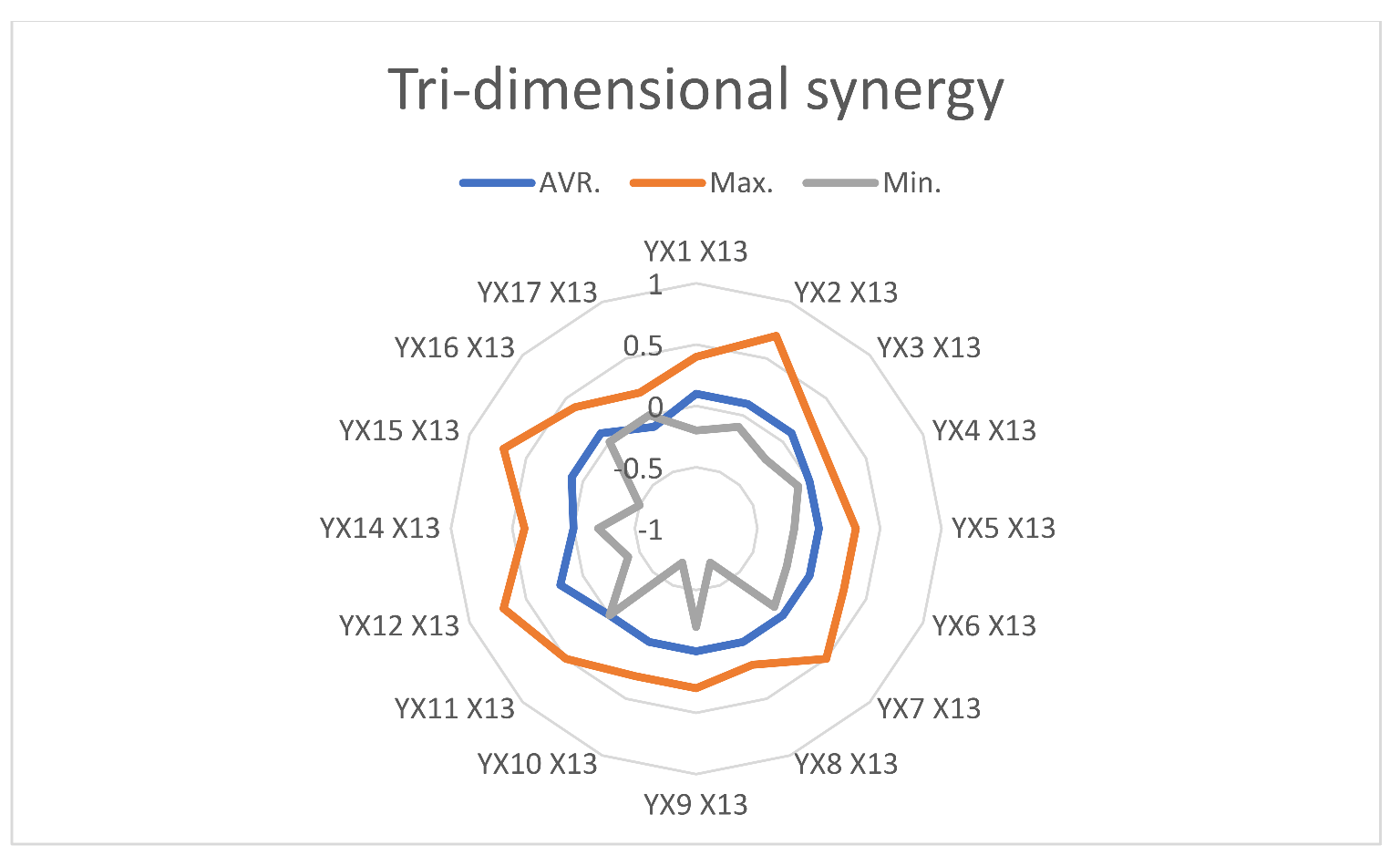
4.2.3. R&D Personnel in Electric Industry (X3)
- R&D personnel in business (X2). This is the first model, and for all three dimensions, the average synergy level is 0.2. The highest level of synergy is 0.9 for Portugal, 0.5 for Denmark and Finland, while for the Netherlands and Romania, the highest levels are 0.4 and 0.5;
- Patent granted by inventor’s country for the total USEPO (X6) for Finland and Netherlands with 0.6—model based on explicit knowledge production (the Netherlands is a country with the KT model Global Innovator);
- Patent granted by the applicant’s country for the total USEPO (X10) for Finland with 0.6;
- The previous conclusion of the binarity of KT in both flows of explicit and tacit knowledge, with emphasis on the importance of the linking between Research and Business, has been achieved.
| YX1X3 | YX2X3 | YX4X3 | YX5X3 | YX6X3 | YX7X3 | YX8X3 | YX9X3 | YX10X3 | YX11X3 | YX12X3 | YX13X3 | YX14X3 | YX15X3 | YX16X3 | YX17X3 | |
|---|---|---|---|---|---|---|---|---|---|---|---|---|---|---|---|---|
| AT | 0.2 | 0.3 | 0.0 | 0.0 | 0.0 | 0.0 | 0.0 | 0.0 | 0.0 | 0.0 | 0.2 | 0.3 | 0.0 | 0.0 | 0.1 | −0.1 |
| BE | −0.1 | −0.1 | −0.1 | −0.2 | −0.1 | −0.1 | −0.1 | −0.2 | −0.1 | 0.0 | 0.0 | −0.1 | 0.0 | 0.0 | 0.0 | 0.0 |
| CZ | 0.5 | 0.3 | 0.2 | 0.2 | 0.1 | 0.1 | 0.1 | 0.1 | 0.6 | 0.8 | 0.3 | 0.4 | −0.1 | 0.1 | 0.2 | −0.6 |
| DK | 0.5 | −0.6 | −0.3 | −0.7 | −0.6 | −0.4 | −0.3 | −0.6 | −0.7 | 0.1 | 0.2 | 0.0 | 0.0 | −0.1 | 0.5 | |
| EE | 0.0 | 0.1 | 0.1 | 0.0 | 0.2 | 0.0 | 0.2 | 0.1 | 0.4 | 0.0 | 0.2 | 0.1 | −0.1 | 0.2 | −0.2 | |
| FI | −0.1 | 0.5 | 0.1 | 0.4 | 0.6 | 0.4 | 0.2 | 0.5 | 0.6 | 0.4 | 0.2 | 0.2 | 0.3 | 0.3 | 0.1 | −0.5 |
| FR | 0.2 | 0.1 | 0.2 | 0.1 | 0.2 | 0.2 | 0.2 | 0.1 | 0.3 | 0.3 | 0.0 | 0.0 | 0.0 | 0.0 | 0.1 | −0.4 |
| DE | 0.0 | 0.0 | 0.0 | −0.1 | 0.0 | 0.0 | 0.0 | −0.1 | 0.0 | 0.0 | 0.0 | 0.0 | 0.0 | 0.0 | 0.0 | 0.0 |
| EL | 0.0 | 0.1 | 0.0 | 0.1 | 0.0 | 0.0 | 0.0 | 0.0 | 0.0 | 0.0 | 0.0 | 0.0 | 0.0 | 0.0 | ||
| HU | −0.1 | 0.2 | −0.1 | 0.0 | 0.0 | 0.0 | 0.0 | −0.1 | −0.1 | −0.1 | 0.0 | −0.1 | 0.0 | −0.1 | 0.0 | |
| IS | 0.0 | 0.0 | 0.0 | 0.0 | 0.0 | 0.0 | 0.0 | 0.0 | 0.0 | 0.0 | 0.0 | 0.0 | 0.0 | |||
| IE | −0.3 | 0.2 | −0.3 | −0.1 | −0.3 | −0.2 | −0.1 | 0.0 | −0.2 | −0.2 | −0.1 | −0.1 | 0.0 | −0.2 | 0.3 | |
| IT | 0.1 | 0.3 | 0.1 | 0.0 | 0.1 | 0.1 | 0.1 | 0.0 | 0.0 | 0.0 | 0.1 | 0.0 | 0.0 | 0.0 | 0.0 | −0.1 |
| LV | 0.3 | 0.0 | 0.0 | −0.1 | 0.0 | −0.1 | −0.2 | −0.1 | 0.0 | −0.2 | 0.1 | |||||
| LT | −0.1 | 0.0 | 0.0 | 0.0 | −0.2 | 0.0 | 0.0 | −0.1 | −0.2 | −0.1 | 0.0 | 0.0 | 0.0 | −0.1 | 0.1 | |
| LU | ||||||||||||||||
| NL | 0.7 | 0.5 | 0.3 | 0.6 | 0.6 | 0.4 | 0.4 | 0.5 | 0.3 | 0.2 | 0.1 | 0.0 | 0.1 | 0.2 | 0.1 | −0.5 |
| NO | ||||||||||||||||
| PL | 0.1 | 0.2 | 0.1 | 0.0 | 0.1 | 0.0 | 0.1 | 0.0 | 0.3 | 0.3 | −0.3 | −0.4 | −0.2 | 0.2 | −0.1 | |
| PT | −0.4 | 0.9 | −0.1 | 0.5 | 0.0 | 0.0 | −0.1 | 0.0 | −0.1 | −0.2 | 0.0 | −0.9 | −0.1 | 0.4 | ||
| RO | −0.2 | 0.4 | 0.0 | 0.0 | 0.0 | −0.1 | 0.0 | −0.3 | 0.1 | 0.1 | −0.1 | 0.1 | −0.1 | 0.1 | ||
| SK | ||||||||||||||||
| SI | 0.0 | 0.0 | 0.0 | 0.0 | 0.0 | 0.0 | 0.0 | 0.0 | 0.0 | 0.0 | 0.0 | 0.0 | 0.0 | 0.0 | 0.0 | 0.0 |
| ES | 0.0 | 0.3 | 0.1 | 0.0 | 0.1 | 0.1 | 0.1 | 0.0 | 0.3 | 0.2 | 0.0 | 0.0 | 0.0 | 0.1 | 0.0 | −0.1 |
| SE | ||||||||||||||||
| TR | 0.0 | 0.0 | 0.0 | 0.0 | 0.0 | 0.0 | 0.0 | 0.0 | 0.0 | 0.0 | 0.0 | 0.0 | 0.0 | 0.0 | 0.0 | 0.0 |
| UK | 0.0 | 0.0 | 0.0 | 0.0 | 0.0 | 0.0 | 0.0 | 0.0 | 0.0 | 0.0 | 0.0 | 0.0 | 0.0 | 0.0 | 0.0 | 0.0 |
| AVR. | 0.0 | 0.2 | 0.0 | 0.1 | 0.0 | 0.0 | 0.0 | 0.0 | 0.1 | 0.1 | 0.0 | 0.1 | 0.0 | 0.0 | 0.0 | 0.0 |
| Max. | 0.7 | 0.9 | 0.3 | 0.6 | 0.6 | 0.4 | 0.4 | 0.5 | 0.6 | 0.8 | 0.3 | 0.4 | 0.3 | 0.3 | 0.2 | 0.5 |
| Min. | −0.4 | −0.1 | −0.6 | −0.3 | −0.7 | −0.6 | −0.4 | −0.3 | −0.6 | −0.7 | −0.3 | −0.4 | −0.1 | −0.9 | −0.2 | −0.6 |

4.2.4. Employment in Energy Sector (X15)
- Training electric industry (X13) is on average 0.1. Some countries present important levels of synergies: Norway at 0.7, Finland at 0.4, and Sweden at 0.3;
- Finland is a remarkable case of positive synergies with all the analyzed indicators with the exception of R&D personnel in business (X2) and the trade-off with air emissions;
| YX1X15 | YX2X15 | YX3X15 | YX4X15 | YX5X15 | YX6X15 | YX7X15 | YX8X15 | YX9X15 | YX10X15 | YX11X15 | YX12X15 | YX13X15 | YX14X15 | YX16X15 | YX17X15 | |
|---|---|---|---|---|---|---|---|---|---|---|---|---|---|---|---|---|
| AT | 0.0 | 0.0 | 0.0 | 0.0 | 0.0 | 0.0 | 0.0 | 0.0 | 0.0 | 0.0 | 0.0 | 0.1 | 0.0 | 0.0 | 0.1 | 0.0 |
| BE | 0.0 | 0.0 | 0.0 | 0.0 | 0.0 | 0.0 | 0.0 | 0.0 | 0.0 | 0.0 | 0.0 | 0.0 | 0.0 | 0.0 | 0.0 | 0.0 |
| CZ | 0.1 | 0.1 | 0.0 | 0.0 | 0.0 | 0.0 | 0.0 | 0.0 | 0.0 | 0.1 | 0.1 | 0.0 | 0.1 | 0.0 | 0.0 | −0.1 |
| DK | 0.0 | 0.0 | 0.0 | 0.0 | 0.0 | 0.0 | 0.0 | 0.0 | 0.0 | 0.0 | 0.0 | 0.0 | 0.0 | 0.0 | 0.0 | |
| EE | −0.1 | 0.0 | 0.0 | 0.0 | 0.0 | 0.0 | 0.0 | 0.0 | 0.0 | −0.2 | 0.0 | −0.1 | 0.0 | −0.1 | 0.1 | |
| FI | 0.3 | −0.2 | 0.3 | 0.1 | 0.2 | 0.3 | 0.6 | 0.1 | 0.2 | 0.4 | 0.7 | 0.3 | 0.4 | 0.5 | 0.1 | −0.6 |
| FR | 0.0 | 0.0 | 0.0 | 0.0 | 0.0 | 0.0 | 0.0 | 0.0 | 0.0 | 0.1 | 0.1 | 0.0 | 0.0 | 0.0 | 0.0 | −0.1 |
| DE | 0.0 | 0.1 | 0.0 | 0.1 | 0.1 | 0.1 | 0.1 | 0.1 | 0.1 | 0.1 | 0.1 | 0.0 | 0.0 | 0.1 | 0.0 | −0.1 |
| EL | 0.0 | 0.0 | 0.0 | 0.0 | 0.0 | 0.0 | 0.0 | 0.0 | 0.0 | 0.0 | 0.0 | 0.0 | 0.0 | 0.0 | ||
| HU | 0.0 | 0.0 | 0.0 | 0.0 | 0.0 | 0.0 | 0.0 | 0.1 | 0.0 | 0.0 | 0.0 | 0.0 | −0.1 | −0.1 | 0.0 | |
| IS | 0.0 | 0.0 | 0.0 | 0.0 | 0.0 | 0.0 | 0.0 | 0.0 | 0.0 | 0.0 | −0.1 | 0.0 | 0.0 | |||
| IE | 0.0 | 0.0 | 0.0 | 0.0 | 0.0 | 0.0 | 0.0 | 0.0 | 0.0 | 0.0 | 0.0 | 0.0 | 0.0 | 0.0 | 0.0 | |
| IT | 0.0 | 0.0 | 0.0 | 0.0 | 0.0 | 0.0 | 0.0 | 0.0 | 0.0 | 0.0 | 0.0 | 0.0 | 0.0 | 0.0 | 0.0 | 0.0 |
| LV | 0.0 | 0.0 | 0.0 | 0.0 | 0.0 | 0.0 | 0.0 | 0.0 | 0.0 | 0.0 | 0.0 | |||||
| LT | 0.0 | −0.1 | 0.0 | 0.0 | 0.0 | −0.1 | 0.0 | 0.0 | −0.1 | −0.1 | 0.0 | 0.0 | 0.0 | 0.0 | 0.1 | |
| LU | 0.0 | 0.0 | 0.0 | 0.2 | 0.0 | 0.1 | 0.0 | 0.0 | 0.0 | 0.1 | 0.1 | 0.0 | −0.2 | |||
| NL | 0.2 | 0.2 | 0.3 | 0.1 | 0.1 | 0.1 | 0.1 | 0.1 | 0.1 | 0.1 | 0.0 | 0.1 | 0.0 | 0.1 | 0.0 | −0.3 |
| NO | 0.1 | 0.0 | 0.1 | 0.0 | 0.0 | 0.0 | −0.7 | 0.0 | −0.7 | 0.7 | 0.7 | 0.2 | 0.3 | −0.5 | ||
| PL | −0.2 | 0.0 | 0.0 | 0.0 | 0.0 | 0.0 | 0.0 | 0.0 | 0.0 | −0.1 | −0.1 | 0.1 | 0.1 | −0.1 | 0.0 | |
| PT | −0.9 | 0.3 | −0.9 | 0.1 | −0.4 | 0.0 | 0.0 | 0.1 | 0.0 | 0.1 | 0.2 | 0.0 | 0.1 | −0.5 | ||
| RO | 0.1 | −0.4 | 0.1 | 0.0 | 0.0 | 0.0 | 0.0 | 0.0 | −0.1 | 0.2 | 0.3 | −0.2 | −0.4 | 0.3 | ||
| SK | 0.0 | 0.0 | 0.0 | −0.1 | 0.0 | −0.1 | 0.2 | 0.1 | 0.5 | −0.3 | −0.3 | −0.7 | 0.2 | |||
| SI | 0.0 | 0.0 | 0.0 | 0.0 | −0.1 | 0.0 | 0.0 | 0.0 | 0.0 | 0.0 | 0.0 | 0.0 | 0.0 | 0.0 | 0.1 | 0.0 |
| ES | 0.1 | 0.1 | 0.1 | 0.0 | 0.0 | 0.0 | 0.0 | 0.0 | 0.0 | 0.1 | 0.0 | −0.3 | −0.2 | 0.1 | 0.2 | −0.5 |
| SE | 0.3 | 0.0 | 0.0 | 0.0 | 0.0 | 0.0 | 0.0 | 0.0 | 0.0 | 0.3 | 0.3 | 0.2 | −0.1 | |||
| CH | 0.0 | 0.0 | 0.0 | 0.0 | 0.0 | 0.0 | 0.0 | 0.0 | 0.0 | 0.0 | 0.0 | 0.0 | 0.0 | 0.0 | 0.0 | 0.0 |
| TR | 0.0 | 0.0 | 0.0 | 0.0 | 0.0 | 0.0 | 0.0 | 0.0 | 0.0 | 0.0 | 0.0 | 0.0 | 0.0 | 0.0 | 0.0 | 0.0 |
| UK | 0.0 | 0.0 | 0.0 | 0.0 | 0.0 | 0.0 | 0.0 | 0.0 | 0.0 | 0.0 | 0.0 | 0.0 | 0.1 | 0.0 | 0.0 | −0.1 |
| AVR. | 0.0 | 0.0 | 0.0 | 0.0 | 0.0 | 0.0 | 0.0 | 0.0 | 0.0 | 0.0 | 0.0 | 0.0 | 0.1 | 0.0 | 0.0 | −0.1 |
| Max. | 0.3 | 0.3 | 0.3 | 0.1 | 0.2 | 0.3 | 0.6 | 0.1 | 0.2 | 0.4 | 0.7 | 0.7 | 0.7 | 0.5 | 0.3 | 0.3 |
| Min. | −0.9 | −0.4 | −0.9 | 0.0 | −0.4 | −0.1 | 0.0 | −0.1 | −0.7 | −0.2 | −0.7 | −0.3 | −0.2 | −0.3 | −0.7 | −0.6 |
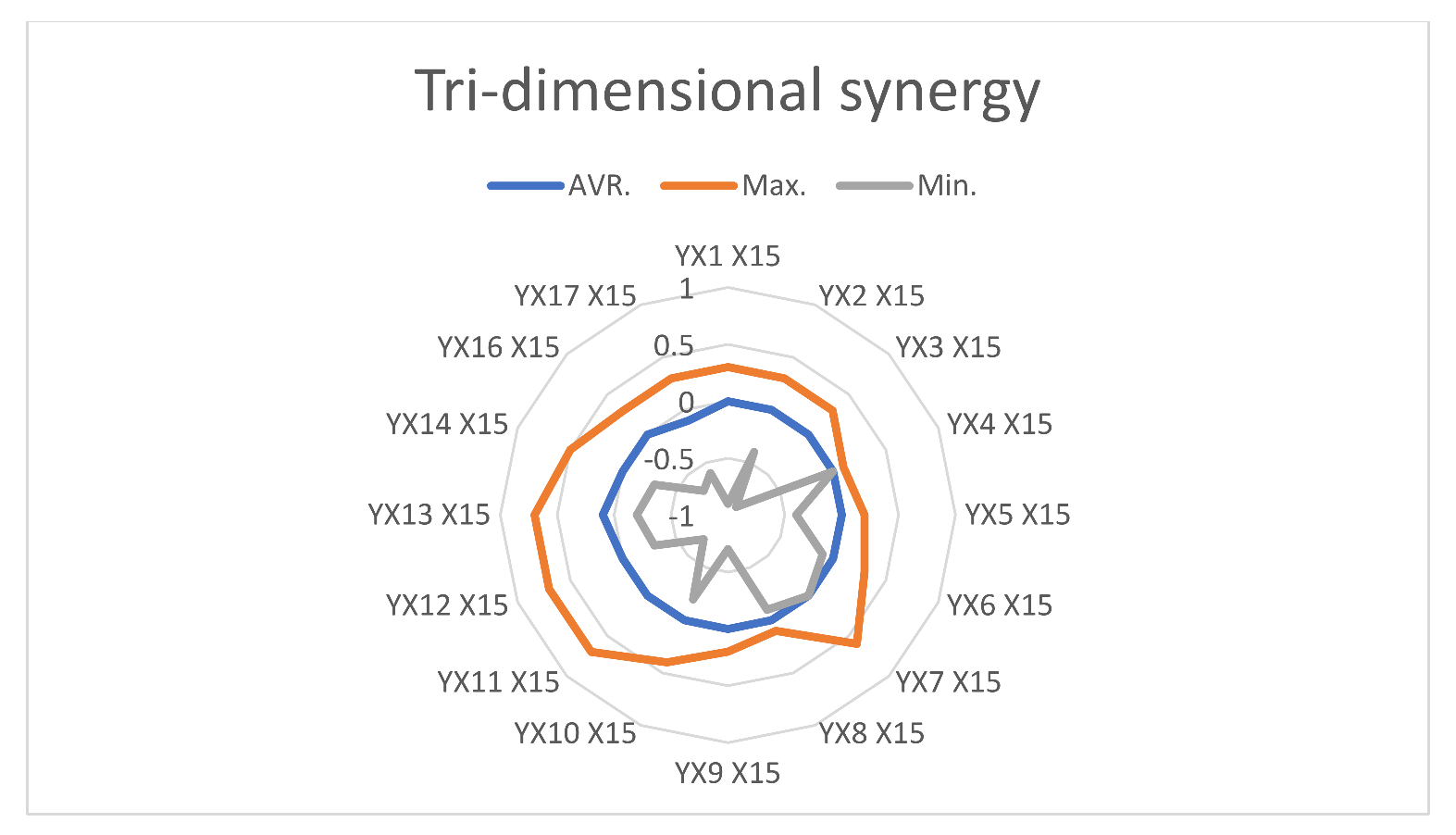
4.2.5. Air Emissions Intensity of Industry (X17)
- Patent granted by inventor’s country for the total USEPO (X6) has the highest form of explicit knowledge and realizes a maximum trade-off at 0.2. For this triple synergy, the best performer is Denmark at −0.8, followed by Finland at −0.5, and Ireland, Italy, Lithuania, the Netherlands with values between −0.3 and −0.4;
- Patent granted by applicant’s country for the total USEPO (X10) and Patent granted by applicant’s country for the electricity USEPO (X11) generate trade-offs at −0.8 for Denmark, Finland, and France;
- The explicit knowledge is linked to the air emission synergy drop. There are three countries that manage to exploit a various range of patents (X2–X11)—Denmark, Finland, and France.
| YX1X17 | YX2X17 | YX3X17 | YX4X17 | YX5X17 | YX6X17 | YX7X17 | YX8X17 | YX9X17 | YX10X17 | YX11X17 | YX12X17 | YX13X17 | YX14X17 | YX15X17 | YX16X17 | |
|---|---|---|---|---|---|---|---|---|---|---|---|---|---|---|---|---|
| AT | −0.1 | −0.2 | −0.1 | 0.0 | 0.0 | 0.0 | 0.0 | 0.0 | 0.0 | 0.0 | 0.0 | −0.1 | −0.1 | 0.0 | 0.0 | 0.0 |
| BE | 0.0 | −0.1 | −0.2 | −0.1 | −0.2 | −0.1 | −0.1 | −0.1 | −0.2 | −0.1 | 0.0 | 0.0 | −0.1 | 0.0 | 0.0 | 0.0 |
| CZ | −0.6 | −0.5 | −0.3 | −0.2 | −0.2 | −0.1 | 0.0 | −0.1 | −0.1 | −0.5 | −0.6 | −0.2 | −0.4 | 0.1 | −0.1 | −0.1 |
| DK | 0.5 | 0.6 | −0.7 | −0.3 | −0.8 | −0.7 | −0.5 | −0.3 | −0.8 | −0.8 | 0.1 | 0.2 | 0.0 | 0.0 | −0.1 | |
| EE | −0.2 | −0.1 | −0.1 | 0.0 | 0.0 | −0.1 | 0.0 | −0.1 | 0.0 | −0.6 | 0.0 | −0.3 | −0.2 | 0.1 | −0.3 | |
| FI | −0.5 | 0.2 | −0.4 | −0.1 | −0.3 | −0.5 | −0.7 | −0.1 | −0.3 | −0.5 | −0.7 | −0.4 | −0.4 | −0.6 | −0.6 | −0.1 |
| FR | −0.4 | −0.3 | −0.1 | −0.3 | −0.2 | −0.3 | −0.3 | −0.2 | −0.2 | −0.4 | −0.5 | 0.0 | 0.0 | 0.0 | −0.1 | −0.1 |
| DE | 0.0 | −0.1 | 0.0 | −0.2 | −0.2 | −0.2 | −0.2 | −0.2 | −0.3 | −0.1 | −0.1 | 0.0 | 0.0 | −0.1 | −0.1 | 0.0 |
| EL | 0.0 | 0.0 | 0.0 | 0.0 | 0.0 | 0.0 | 0.0 | 0.0 | 0.0 | 0.0 | 0.0 | 0.0 | 0.0 | 0.0 | ||
| HU | 0.0 | 0.0 | 0.0 | 0.0 | 0.0 | 0.0 | 0.0 | 0.0 | 0.0 | 0.0 | 0.0 | 0.0 | 0.0 | 0.0 | 0.0 | |
| IS | 0.0 | 0.0 | 0.0 | 0.0 | 0.0 | 0.0 | 0.0 | 0.0 | 0.0 | 0.0 | 0.0 | 0.0 | 0.0 | |||
| IE | 0.3 | −0.4 | 0.3 | −0.4 | −0.2 | −0.4 | −0.2 | −0.2 | 0.0 | −0.3 | −0.3 | −0.1 | −0.1 | 0.0 | −0.3 | |
| IT | −0.1 | −0.6 | −0.1 | −0.3 | −0.2 | −0.4 | −0.4 | −0.3 | 0.0 | −0.2 | −0.2 | −0.3 | −0.2 | 0.0 | 0.0 | 0.0 |
| LV | 0.1 | 0.2 | 0.0 | 0.0 | 0.0 | 0.0 | −0.1 | −0.1 | −0.1 | 0.0 | −0.1 | |||||
| LT | 0.1 | −0.2 | 0.0 | 0.0 | −0.1 | −0.3 | −0.1 | 0.0 | −0.2 | −0.3 | −0.1 | −0.1 | 0.0 | 0.1 | −0.1 | |
| LU | 0.0 | 0.0 | 0.0 | −0.2 | 0.0 | −0.1 | 0.0 | 0.0 | 0.0 | −0.1 | −0.1 | −0.2 | 0.0 | |||
| NL | −0.5 | −0.4 | −0.7 | −0.2 | −0.4 | −0.4 | −0.2 | −0.3 | −0.4 | −0.2 | −0.1 | −0.2 | −0.1 | −0.1 | −0.3 | −0.1 |
| NO | −0.1 | 0.0 | −0.1 | 0.0 | 0.0 | 0.0 | 0.5 | 0.0 | 0.5 | −0.5 | −0.5 | −0.3 | −0.5 | −0.2 | ||
| PL | −0.1 | 0.0 | 0.0 | 0.0 | 0.0 | 0.0 | 0.0 | 0.0 | 0.0 | 0.0 | 0.0 | 0.0 | 0.0 | 0.0 | 0.0 | |
| PT | 0.4 | −0.2 | 0.4 | 0.0 | 0.2 | 0.0 | 0.0 | 0.0 | 0.0 | 0.0 | −0.1 | 0.0 | −0.5 | −0.1 | ||
| RO | 0.1 | −0.6 | 0.1 | 0.0 | 0.0 | 0.0 | 0.0 | 0.0 | −0.2 | 0.3 | 0.5 | −0.3 | 0.3 | −0.6 | ||
| SK | −0.2 | −0.1 | −0.1 | −0.2 | 0.0 | −0.3 | 0.4 | 0.5 | 0.2 | −0.1 | −0.1 | 0.2 | −0.2 | |||
| SI | 0.0 | 0.0 | 0.0 | 0.0 | 0.0 | 0.0 | 0.0 | 0.0 | 0.0 | 0.0 | 0.0 | 0.0 | 0.0 | 0.0 | 0.0 | 0.0 |
| ES | −0.1 | −0.1 | −0.2 | 0.0 | 0.0 | 0.0 | 0.0 | 0.0 | 0.0 | −0.2 | −0.1 | 0.3 | 0.2 | −0.1 | −0.5 | −0.2 |
| SE | −0.1 | −0.1 | 0.0 | −0.1 | 0.0 | −0.1 | −0.1 | −0.1 | 0.0 | −0.2 | −0.1 | −0.1 | −0.1 | |||
| CH | 0.0 | 0.0 | 0.0 | 0.0 | 0.0 | 0.0 | 0.0 | 0.0 | 0.0 | 0.0 | 0.0 | 0.0 | 0.0 | 0.0 | 0.0 | 0.0 |
| TR | 0.0 | 0.0 | 0.0 | 0.0 | 0.0 | 0.0 | 0.0 | 0.0 | 0.0 | 0.0 | 0.0 | 0.0 | 0.0 | 0.0 | 0.0 | 0.0 |
| UK | 0.0 | −0.1 | 0.0 | −0.1 | −0.1 | −0.2 | −0.1 | −0.1 | −0.1 | −0.1 | −0.1 | −0.1 | −0.1 | −0.1 | −0.1 | −0.1 |
| AVR. | 0.0 | −0.1 | 0.0 | −0.1 | −0.1 | −0.2 | −0.1 | −0.1 | −0.1 | −0.1 | −0.1 | −0.1 | −0.1 | −0.1 | −0.1 | −0.1 |
| Max. | 0.5 | 0.2 | 0.6 | 0.0 | 0.2 | 0.0 | 0.0 | 0.0 | 0.5 | 0.5 | 0.5 | 0.5 | 0.2 | 0.1 | 0.3 | 0.0 |
| Min. | −0.6 | −0.6 | −0.7 | −0.7 | −0.4 | −0.8 | −0.7 | −0.5 | −0.4 | −0.8 | −0.8 | −0.5 | −0.5 | −0.6 | −0.6 | −0.6 |
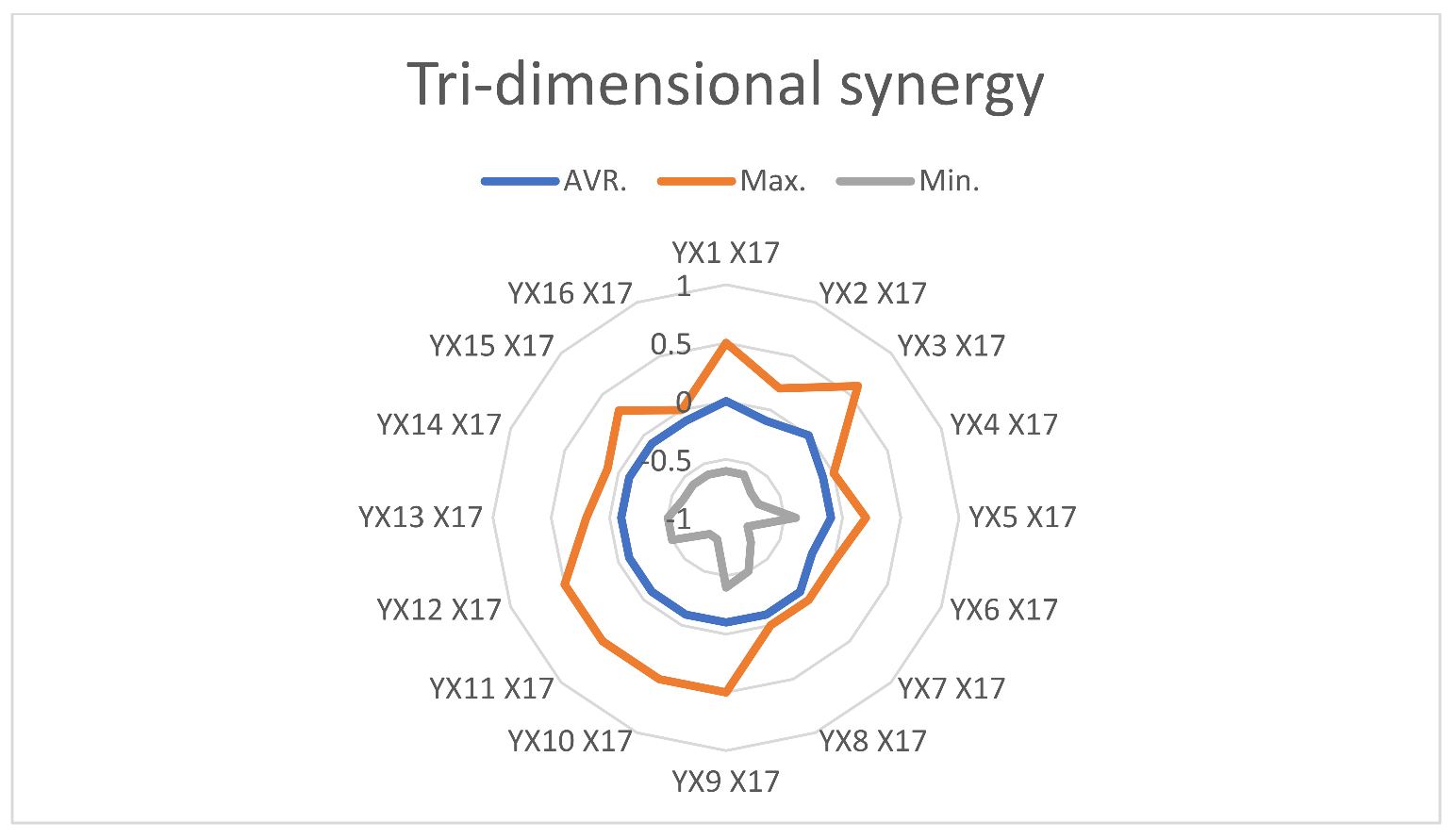
4.2.6. Wealth/Real GDP per Capita (X16)
- The lowest synergy levels at 0.1 are with X2, X10, X12, and X13, as it is delinked from the other variables;
- Total training (X12) represents the most successful variable for Norway and Sweden with synergies at 0.4 and for Latvia and Slovakia at 0.5;
- R&D personnel in business (X2) realizes the maximum 3D synergies for Romania at 0.8. This result showcases the technological KT process from the main company to subsidiaries (only in the private sector).
| YX1X16 | YX2X16 | YX3X16 | YX4X16 | YX5X16 | YX6X16 | YX7X16 | YX8X16 | YX9X16 | YX10X16 | YX11X16 | YX12X16 | YX13X16 | YX14X16 | YX15X16 | YX17X16 | |
|---|---|---|---|---|---|---|---|---|---|---|---|---|---|---|---|---|
| AT | 0.1 | 0.0 | 0.1 | 0.0 | 0.0 | 0.0 | 0.0 | 0.0 | 0.0 | 0.0 | 0.0 | 0.3 | 0.1 | 0.0 | 0.1 | 0.0 |
| BE | 0.0 | 0.0 | 0.0 | 0.0 | 0.0 | 0.0 | 0.0 | 0.0 | 0.0 | 0.0 | 0.0 | 0.0 | 0.0 | 0.0 | 0.0 | 0.0 |
| CZ | 0.2 | 0.1 | 0.1 | 0.1 | 0.0 | 0.0 | 0.0 | 0.0 | 0.0 | 0.1 | 0.2 | 0.1 | 0.1 | 0.0 | 0.0 | −0.1 |
| DK | −0.1 | −0.1 | 0.1 | 0.0 | 0.1 | 0.1 | 0.1 | 0.0 | 0.1 | 0.1 | 0.0 | 0.0 | 0.0 | 0.0 | −0.1 | |
| EE | 0.2 | 0.0 | 0.0 | 0.0 | 0.0 | 0.1 | 0.0 | 0.1 | 0.0 | 0.4 | 0.0 | 0.2 | 0.1 | −0.1 | −0.3 | |
| FI | 0.1 | 0.0 | 0.0 | 0.0 | 0.0 | 0.1 | 0.1 | 0.0 | 0.0 | 0.1 | 0.1 | 0.1 | 0.1 | 0.1 | 0.1 | −0.1 |
| FR | 0.1 | 0.1 | 0.0 | 0.1 | 0.0 | 0.1 | 0.1 | 0.1 | 0.0 | 0.1 | 0.1 | 0.0 | 0.0 | 0.0 | 0.0 | −0.1 |
| DE | 0.0 | 0.0 | 0.0 | 0.1 | 0.1 | 0.0 | 0.1 | 0.1 | 0.1 | 0.0 | 0.0 | 0.0 | 0.0 | 0.0 | 0.0 | 0.0 |
| EL | 0.0 | −0.1 | 0.0 | −0.1 | 0.0 | −0.1 | −0.1 | −0.1 | −0.1 | 0.0 | −0.1 | 0.0 | 0.0 | 0.0 | ||
| HU | −0.1 | 0.0 | −0.1 | 0.1 | 0.0 | 0.0 | 0.0 | 0.0 | 0.2 | 0.2 | 0.0 | 0.0 | 0.2 | −0.1 | 0.0 | |
| IS | 0.0 | 0.0 | 0.0 | 0.0 | 0.0 | 0.0 | 0.0 | 0.0 | 0.0 | 0.0 | 0.0 | 0.0 | 0.0 | |||
| IE | −0.2 | 0.3 | −0.2 | 0.3 | 0.1 | 0.3 | 0.2 | 0.1 | 0.0 | 0.2 | 0.2 | 0.1 | 0.1 | 0.0 | −0.3 | |
| IT | 0.0 | 0.0 | 0.0 | 0.0 | 0.0 | 0.0 | 0.0 | 0.0 | 0.0 | 0.0 | 0.0 | 0.0 | 0.0 | 0.0 | 0.0 | 0.0 |
| LV | −0.2 | −0.6 | 0.0 | 0.2 | 0.3 | 0.2 | 0.3 | 0.5 | 0.3 | 0.0 | −0.1 | |||||
| LT | −0.1 | 0.2 | 0.0 | 0.0 | 0.0 | 0.2 | 0.0 | 0.0 | 0.1 | 0.2 | 0.1 | 0.1 | 0.0 | 0.0 | −0.1 | |
| LU | 0.0 | 0.0 | 0.0 | 0.0 | 0.0 | 0.0 | 0.0 | 0.0 | 0.0 | 0.0 | 0.0 | 0.0 | 0.0 | |||
| NL | 0.1 | 0.1 | 0.1 | 0.0 | 0.1 | 0.1 | 0.0 | 0.0 | 0.1 | 0.0 | 0.0 | 0.0 | 0.0 | 0.0 | 0.0 | −0.1 |
| NO | 0.0 | 0.0 | 0.0 | 0.0 | 0.0 | 0.0 | −0.3 | 0.0 | −0.4 | 0.4 | 0.3 | 0.1 | 0.3 | −0.2 | ||
| PL | 0.2 | 0.0 | 0.1 | 0.0 | 0.0 | 0.0 | 0.0 | 0.0 | 0.0 | 0.1 | 0.1 | −0.1 | −0.1 | −0.1 | 0.0 | |
| PT | −0.1 | 0.0 | −0.1 | 0.0 | 0.0 | 0.0 | 0.0 | 0.0 | 0.0 | 0.0 | 0.0 | 0.0 | 0.1 | −0.1 | ||
| RO | −0.1 | 0.8 | −0.1 | 0.0 | 0.0 | 0.0 | 0.0 | 0.0 | 0.3 | −0.4 | −0.6 | 0.4 | −0.4 | −0.6 | ||
| SK | 0.1 | 0.1 | 0.1 | 0.1 | 0.0 | 0.1 | −0.3 | −0.2 | −0.7 | 0.5 | 0.4 | −0.7 | −0.2 | |||
| SI | 0.0 | 0.0 | 0.0 | 0.0 | −0.1 | 0.0 | 0.0 | 0.0 | 0.0 | 0.0 | 0.0 | 0.0 | 0.0 | 0.0 | 0.1 | 0.0 |
| ES | 0.0 | 0.0 | 0.0 | 0.0 | 0.0 | 0.0 | 0.0 | 0.0 | 0.0 | 0.0 | 0.0 | −0.1 | −0.1 | 0.0 | 0.2 | −0.2 |
| SE | 0.4 | 0.0 | 0.0 | 0.0 | 0.0 | 0.0 | 0.0 | 0.0 | 0.0 | 0.4 | 0.4 | 0.2 | −0.1 | |||
| CH | 0.0 | 0.0 | 0.0 | 0.0 | 0.0 | 0.0 | 0.0 | 0.0 | 0.0 | 0.0 | 0.0 | 0.0 | 0.0 | 0.0 | 0.0 | 0.0 |
| TR | 0.0 | 0.0 | 0.0 | 0.0 | 0.0 | 0.0 | 0.0 | 0.0 | 0.0 | 0.0 | 0.0 | 0.0 | 0.0 | 0.0 | 0.0 | 0.0 |
| UK | 0.0 | 0.1 | 0.0 | 0.0 | 0.0 | 0.0 | 0.0 | 0.0 | 0.0 | 0.1 | 0.0 | 0.1 | 0.0 | 0.1 | 0.0 | −0.1 |
| AVR. | 0.0 | 0.1 | 0.0 | 0.0 | 0.0 | 0.0 | 0.0 | 0.0 | 0.0 | 0.1 | 0.0 | 0.1 | 0.0 | 0.1 | 0.0 | −0.1 |
| Max. | 0.2 | 0.8 | 0.1 | 0.3 | 0.1 | 0.3 | 0.2 | 0.2 | 0.2 | 0.4 | 0.2 | 0.5 | 0.4 | 0.4 | 0.3 | 0.0 |
| Min. | −0.2 | −0.6 | −0.2 | −0.1 | −0.1 | −0.1 | −0.1 | −0.1 | −0.3 | −0.2 | −0.7 | −0.6 | −0.1 | 0.0 | −0.7 | −0.6 |
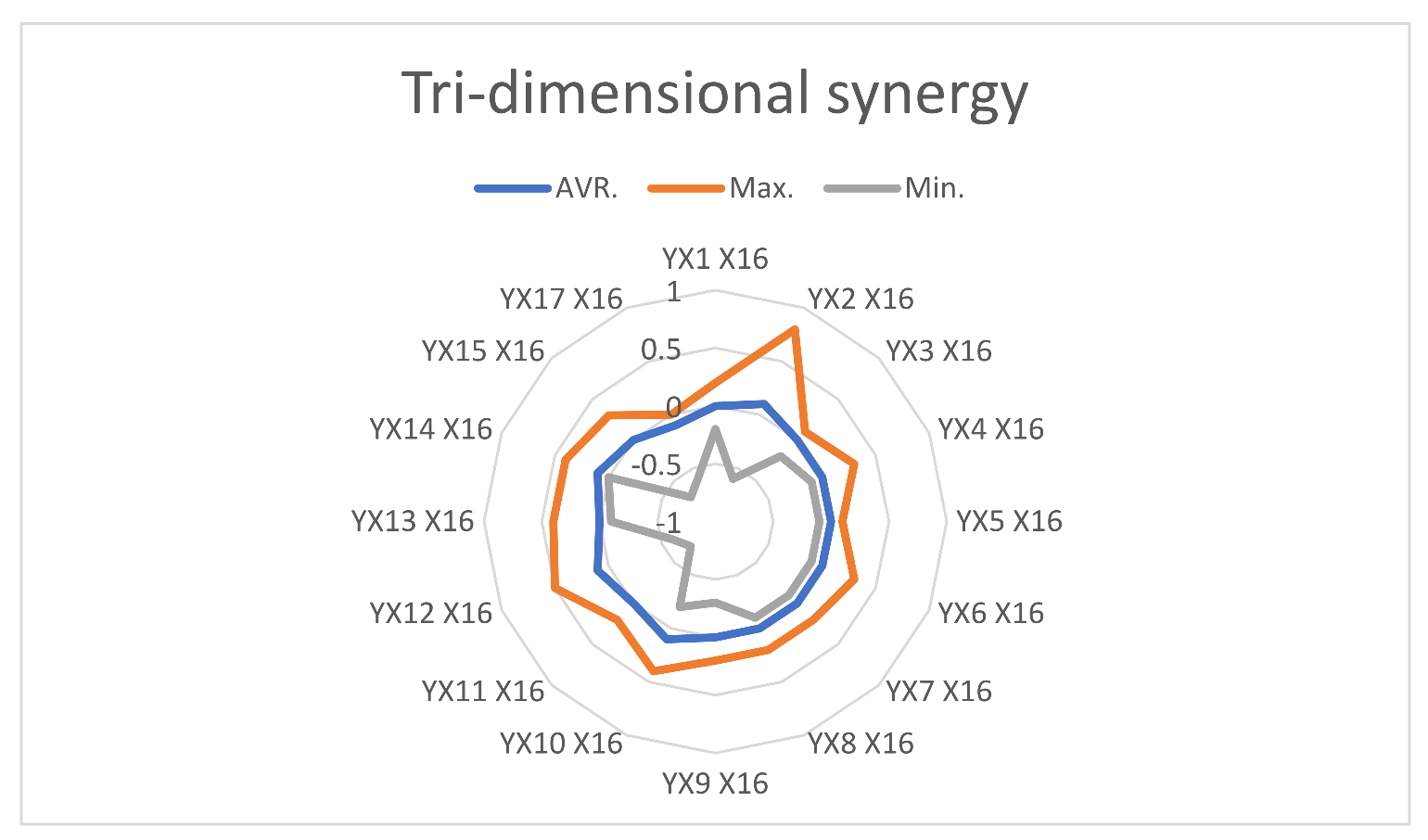
5. Discussion
5.1. Austria—Implementer Profile
5.2. Belgium—Global Innovator
5.3. Czech Republic—Integrator Profile
5.4. Denmark—Global Innovator
5.5. Estonia—Local Innovator
5.6. Finland—Integrator Profile
5.7. France—Global Innovator
5.8. Germany—Global Innovator
5.9. Greece—Global Innovator
5.10. Hungary—Global Innovator
5.11. Iceland—Outlier/No KT
5.12. Ireland—Global Innovator
5.13. Italy—Integrated Player
5.14. Latvia—Implementer
5.15. Lithuania—Global Innovator
5.16. Luxembourg—(Weak) Global Innovator
5.17. The Netherlands—Global Innovator
5.18. Norway—Implementer
5.19. Poland—Local Innovator
5.20. Portugal—Implementer
5.21. Romania—Local Innovator
5.22. Slovakia—Not Applicable Profile
5.23. Slovenia—No KT
5.24. Spain—Local Innovator
5.25. Sweden—Implementer
5.26. UK—Global Innovator
6. Conclusions
- Synergies between the share in the renewable consumption and tacit knowledge flows (both training and training in energy sector) are linked with the third dimension of synergies in income and employment growth. This is the case of Norway, Sweden, and Finland. According to the framework of Chini [23], these countries present (except for Finland) the Integrated Players KT model. The national models are differentiating through the explicit knowledge transfers, the patents, and R&D personnel in business (in the case of Sweden);
- Spain and Slovakia have the profile of implementers with synergies between the tacit knowledge (training) and the development of the renewable energy sector, while they showcase a gap in the explicit knowledge transfer. For those models, they displayed unwanted synergies with the growth of air emissions. This is an indication of an outdated system with old technologies;
- Trade-offs between the share in the renewable consumption and explicit knowledge flows (X6, X7, X10, and X11) are linked with the third dimension of synergies in air emissions. This is the case of Denmark, France, Ireland, and Finland. According to the framework of Chini [23], these countries present (except from Finland) the Global Innovators KT model.
- The last part of the paper is represented by the country analysis, which discloses the apparition of synergies as combined efforts and work of different elements and mechanisms of the energy sector, as well as of trade-offs, for the realization of the sustainable development targets across the European area. Below, the representation of the country analysis was realized under the form of a KT model matrix based on the Chini [23] framework and determined by the obtained results of this study.
- -
- Firstly, the analysis created around the testing for bi-dimensional synergies between renewable energy share in the final consumption (Y) and all the other variables in the study offers the possibility of identifying the national strengths and weakness;
- -
- Secondly, the study presents the evaluation of the tri-dimensional synergies between renewable energy shares in the final consumption (Y), one selected indicator (X12/X13/X3/X15/X17/X16), and all the other variables in the study, offering an image of the contribution, giving insights about the region potential of growth and the leaders;
- -
- Thirdly, the study included a discussion on the country profiles and the KT typology of the latter.
Author Contributions
Funding
Institutional Review Board Statement
Informed Consent Statement
Acknowledgments
Conflicts of Interest
References
- DG Energy. European Commission Strategic Plan 2020–2024; European Commission: Brussels, Belgium, 2020. [Google Scholar]
- Qian, X.; Liu, X.; Pu, R. Evaluation of knowledge transfer efficiency based on the synergy of innovative clusters. RJCM 2020, 1, 1–25. [Google Scholar] [CrossRef]
- Alola, A.A.; Bekun, F.V.; Sarkodie, S.A. Dynamic impact of trade policy, economic growth, fertility rate, renewable and non-renewable energy consumption on ecological footprint in Europe. Sci. Total. Environ. 2019, 685, 702–709. [Google Scholar] [CrossRef] [PubMed]
- Guimón, J. Policy Initiatives to Enhance the Impact of Public Research: Promoting Excellence, Transfer and Co-Creation; OECD Publishing: Paris, France, 2019; Volume 81. [Google Scholar]
- Davenport, T.H.; Prusak, L. Working Knowledge. How Organizations Manage What They Know; Harvard Business School Press: Boston, MA, USA, 1998. [Google Scholar]
- Sveiby, K.-E. A knowledge-based theory of the firm to guide in strategy formulation. J. Intellect. Cap. 2001, 2, 344–358. [Google Scholar] [CrossRef] [Green Version]
- Argote, L.; Ingram, P. Knowledge Transfer: A Basis for Competitive Advantage in Firms. Organ. Behav. Hum. Decis. Process. 2000, 82, 150–169. [Google Scholar] [CrossRef] [Green Version]
- De Luca, P.; Rubio, M.C. The curve of knowledge transfer: A theoretical model. Bus. Process. Manag. J. 2019, 25, 10–26. [Google Scholar] [CrossRef]
- Milagres, R.; Bucharth, A. Knowledge transfer in interorganizational partnerships: What do we know? Bus. Process Manag. J. 2019, 25, 27–68. [Google Scholar] [CrossRef] [Green Version]
- Vlajcic, D.; Marzi, G.; Caputo, A.; Dabic, M. The role of geographical distance on the relationship between cultural intelligence and knowledge transfer. Bus. Process. Manag. J. 2019, 25, 104–125. [Google Scholar] [CrossRef] [Green Version]
- Secundo, G.; Toma, A.; Schiuma, G.; Passiante, G. Knowledge transfer in open innovation: A classification framework for healthcare ecosystems. Bus. Process Manag. J. 2019, 25, 144–163. [Google Scholar] [CrossRef]
- D’Andreamatteo, A.; Ianni, L.; Rangone, A.; Paolone, F.; Sargiacomo, M. Institutional pressures, isomorphic changes and key agents in the transfer of knowledge of Lean in Healthcare. Bus. Process. Manag. J. 2019, 25, 164–184. [Google Scholar] [CrossRef]
- Paoloni, P.; Cesaroni, F.M.; Demartini, P. Relational capital and knowledge transfer in universities. Bus. Process. Manag. J. 2019, 25, 185–201. [Google Scholar] [CrossRef]
- Cardoni, A.; Dumay, J.; Palmaccio, M.; Celenza, D. Knowledge transfer in a start-up craft brewery. Bus. Process. Manag. J. 2019, 25, 219–243. [Google Scholar] [CrossRef]
- Rifkin, J. The Zero Marginal Cost Society: The Internet of Things, the Collaborative Commons and the Eclipse of Capitalism; Palgrave MacMillan: New York, NY, USA, 2014. [Google Scholar]
- Bienhaus, F.; Haddud, A. Procurement 4.0: Factors influencing the digitisation of procurement and supply chains. Bus. Process. Manag. J. 2018, 24, 965–984. [Google Scholar] [CrossRef]
- Müller, J.M.; Buliga, O.; Voigt, K.-I. Fortune favors the prepared: How SMEs approach business model innovations in Industry 4.0. Technol. Forecast. Soc. Chang. 2018, 132, 2–17. [Google Scholar] [CrossRef]
- Schneider, P. Managerial challenges of Industry 4.0: An empirically backed research agenda for a nascent field. Rev. Manag. Sci. 2018, 12, 803–848. [Google Scholar] [CrossRef]
- Huws, U. The Transformation of Work in a Global Knowledge Economy: Towards a Conceptual Framework. TATuP Z. Tech. Theor. Prax. 2006, 15, 103–108. [Google Scholar]
- Blohm, M. An Enabling Framework to Support the Sustainable Energy Transition at the National Level. Sustainability 2021, 13, 3834. [Google Scholar] [CrossRef]
- Zhou, Y.; Pan, M.; Urban, F. Comparing the International Knowledge Flow of China’s Wind and Solar Photovoltaic (PV) Industries: Patent Analysis and Implications for Sustainable Development. Sustainability 2018, 10, 1883. [Google Scholar] [CrossRef] [Green Version]
- Apostolopoulos, N.; Chalvatzis, K.J.; Liargovas, P.G.; Newbery, R.; Rokou, E. The role of the expert knowledge broker in rural development: Renewable energy funding decisions in Greece. J. Rural. Stud. 2020, 78, 96–106. [Google Scholar] [CrossRef]
- Chini, T.C. Effective Knowledge Transfer in Multinational Corporations; Palgrave Macmillan: London, UK, 2004; ISBN 978-1-349-52114-2. [Google Scholar]
- Weitz, N.; Nilsson, M.; Davis, M. A Nexus Approach to the Post-2015 Agenda: Formulating Integrated Water, Energy, and Food SDGs. SAIS Rev. Int. Aff. 2014, 34, 37–50. [Google Scholar] [CrossRef]
- Blanc, D.L. Towards Integration at Last? The Sustainable Development Goals as a Network of Targets; DESA, Working Paper No. 141; United Nations Department of Economic and Social Affairs (UN DESA): New York, NY, USA, 2015. [Google Scholar]
- Duguma, L.A.; Wambugu, S.W.; Minang, P.A.; van Noordwijk, M. A systematic analysis of enabling conditions for synergy between climate change mitigation and adaptation measures in developing countries. Environ. Sci. Policy 2014, 42, 138–148. [Google Scholar] [CrossRef] [Green Version]
- Luukkanen, J.; Vehmas, J.; Panula-Ontto, J.; Allievi, F.; Kaivo-Oja, J.; Pasanen, T.; Auffermann, B. Synergies or Trade-offs? A New Method to Quantify Synergy Between Different Dimensions of Sustainability. Environ. Policy Gov. 2012, 22, 337–349. [Google Scholar] [CrossRef] [Green Version]
- Mainali, B.; Luukkanen, J.; Silveira, S.; Kaivo-oja, J. Evaluating synergies and trade-offs among Sustainable Development Goals (SDGs): Explorative analyses of development paths in South Asia and Sub-Saharan Africa. Sustainability 2018, 10, 815. [Google Scholar] [CrossRef] [Green Version]
- Banerjee, O.; Cicowiez, M.; Horridge, M.; Vargas, R. Evaluating synergies and trade-offs in achieving the SDGs of zero hunger and clean water and sanitation: An application of the IEEM Platform to Guatemala. Ecol. Econ. 2019, 161, 280–291. [Google Scholar] [CrossRef]
- Halsnæs, K.; Garg, A. Assessing the Role of Energy in Development and Climate Policies—Conceptual Approach and Key Indicators. World Dev. 2011, 39, 987–1001. [Google Scholar] [CrossRef]
- Zhao, Z.; Cai, M.; Wang, F.; Winkler, J.A.; Connor, T.; Chung, M.G.; Liu, J. Synergies and tradeoffs among Sus-tainable Development Goals across boundaries in a metacoupled world. Sci. Total Environ. 2021, 751, 141749. [Google Scholar] [CrossRef]
- Landuyt, D.; Broekx, S.; Goethals, P.L.M. Unit Bayesian belief networks to analyse trade-offs among ecosystem services at the regional scale. Ecol. Indic. 2016, 71, 327–335. [Google Scholar] [CrossRef]
- Hicks, C.; Graham, N.; Cinner, J. Synergies and tradeoffs in how managers, scientists, and fishers value coral reef ecosystem services. Glob. Environ. Chang. 2013, 23, 1444–1453. [Google Scholar] [CrossRef]
- Kearney, S.; Fonte, S.; García, E.; Siles, P.; Chan, K.; Smukler, S. Evaluating ecosystem service trade-offs and synergies from slash-and-mulch agroforestry systems in El Salvador. Ecol. Indic. 2019, 105, 264–278. [Google Scholar] [CrossRef]
- Jain, R.; Singh, A.R.; Yadav, H.C.; Mishra, P.K. Using data mining synergies for evaluating criteria at pre-qualification stage of supplier selection. J. Intell. Manuf. 2012, 25, 165–175. [Google Scholar] [CrossRef]
- Ahmad, M.; Wang, X.; Hilger, T.H.; Luqman, M.; Nazli, F.; Hussain, A.; Zahir, Z.A.; Latif, M.; Saeed, Q.; Malik, H.A.; et al. Evaluating Biochar-Microbe Synergies for Improved Growth, Yield of Maize, and Post-Harvest Soil Characteristics in a Semi-Arid Climate. Agronomy 2020, 10, 1055. [Google Scholar] [CrossRef]
- Meerow, S. A green infrastructure spatial planning model for evaluating ecosystem service tradeoffs and synergies across three coastal megacities. Environ. Res. Lett. 2019, 14, 125011. [Google Scholar] [CrossRef] [Green Version]
- Alfaro-Navarro, J.-L.; López-Ruiz, V.-R.; Peña, D.N. A New Sustainability City Index Based on Intellectual Capital Approach. Sustainability 2017, 9, 860. [Google Scholar] [CrossRef] [Green Version]
- López-Ruiz, V.-R.; Alfaro-Navarro, J.-L.; Nevado-Peña, D. Knowledge-city index construction: An intellectual capital perspective. Expert Syst. Appl. 2014, 41, 5560–5572. [Google Scholar] [CrossRef]
- Pace, N.; Daidone, S.; Davis, B.; Handa, S.; Knowles, M.; Pickmans, R. One Plus One can be Greater than Two: Evaluating Synergies of Development Programmes in Malawi. J. Dev. Stud. 2018, 54, 2023–2060. [Google Scholar] [CrossRef]
- McCarthy, N.; Lipper, L.; Mann, W. Evaluating synergies and trade-offs among food security, development, and climate change. In Climate Change Mitigation and Agriculture; Routledge: London, UK, 2013; pp. 70–80. [Google Scholar]
- Van Velzen, L.; Pennock, S. Cross-Sector Knowledge Transfer. North Sea Solutions for Innovation in Corrosion for Energy; NeSSIE: Glasgow, UK, 2018; p. 28. [Google Scholar]
- European Commission; Statistical Office of the European Union. Sustainable Development in the European Union: Monitoring Report on Progress towards the SDGs in an EU Context: 2021 Edition; Publications Office: Luxembourg, 2021. [Google Scholar]
- OECD STIP COMPASS How to Measure the Influence of Knowledge Transfer on Innovation? 2021. Available online: https://stip.oecd.org/stip/knowledge-transfer/journeys/influenceOfKnowledgeTransferOnInnovation (accessed on 12 August 2021).
- OECD. Frascati Manual 2015Guidelines for Collecting and Reporting Data on Research and Experimental Development. The Measurement of Scientific, Technological and Innovation Activities; OECD: Paris, France, 2015; ISBN 978-92-64-23880-0. [Google Scholar]
- Kaivo-oja, J.; Luukkanen, J.; Malaska, P. Methodology for the Analysis of Critical Industrial Ecology Trends: An Advanced Sustainability Analysis of the Finnish Economy. Futura 2020, 21, 45–61. [Google Scholar]


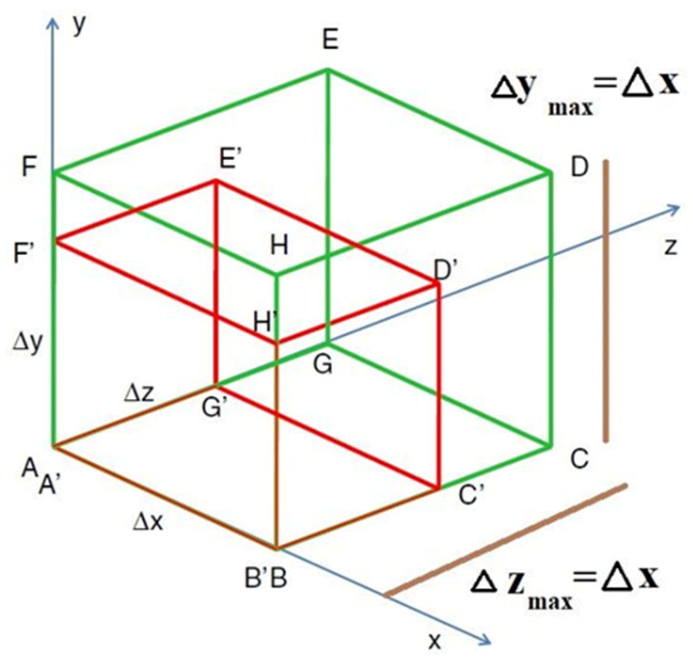

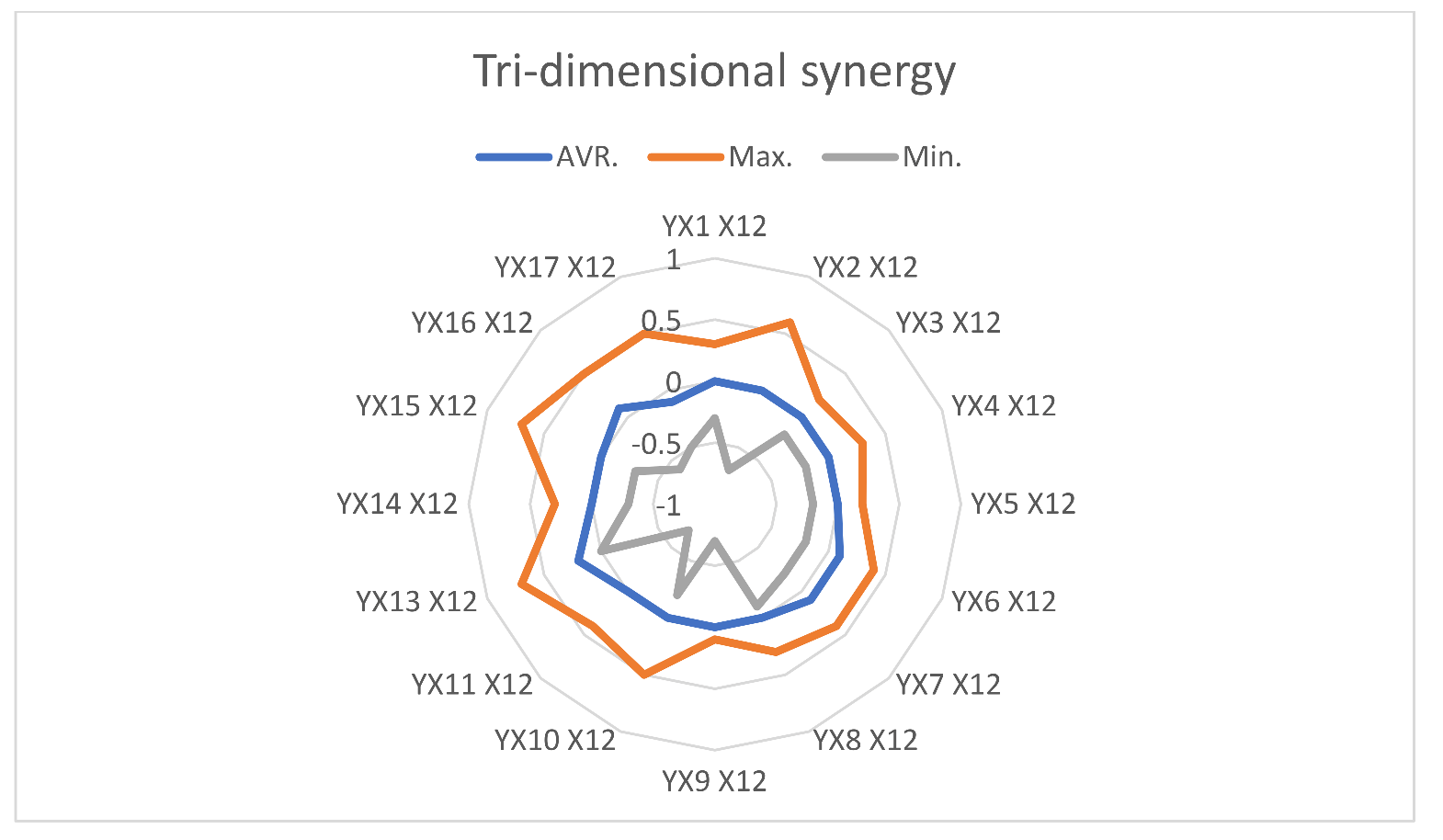

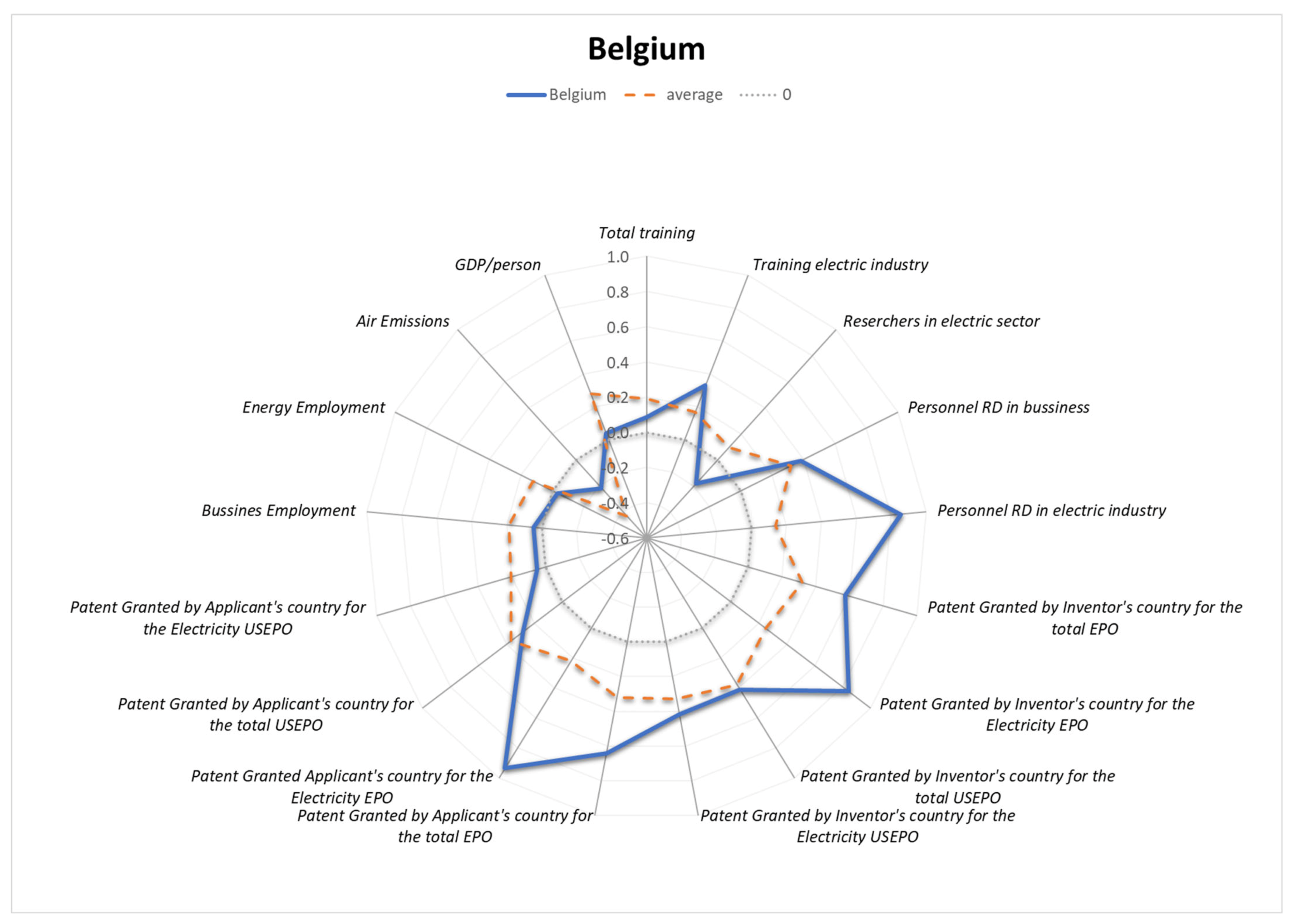
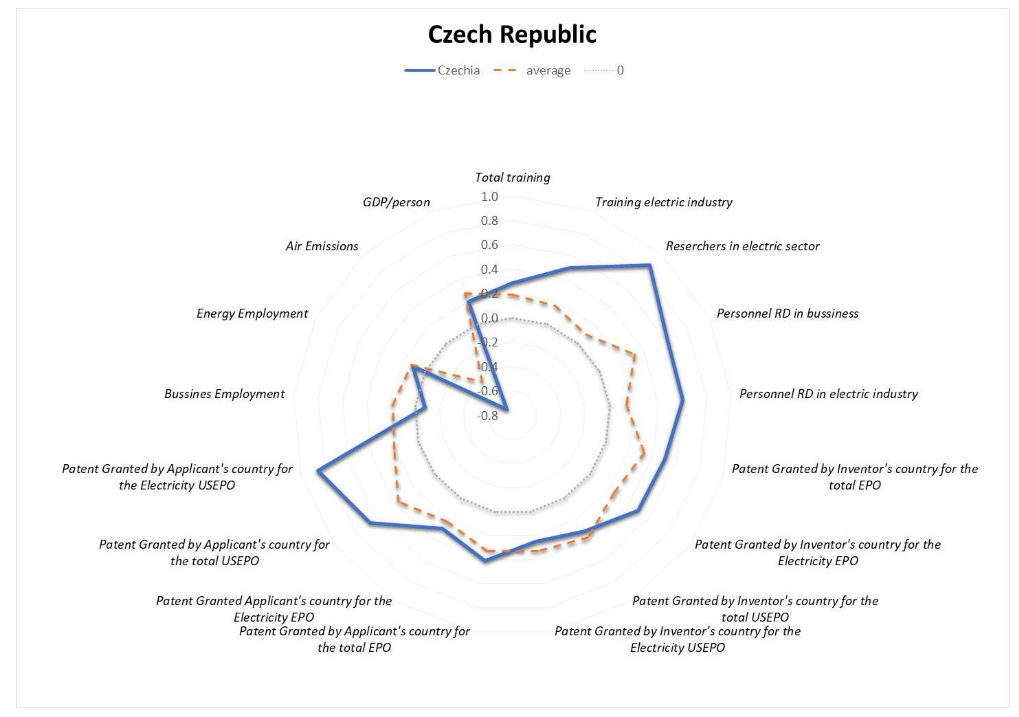


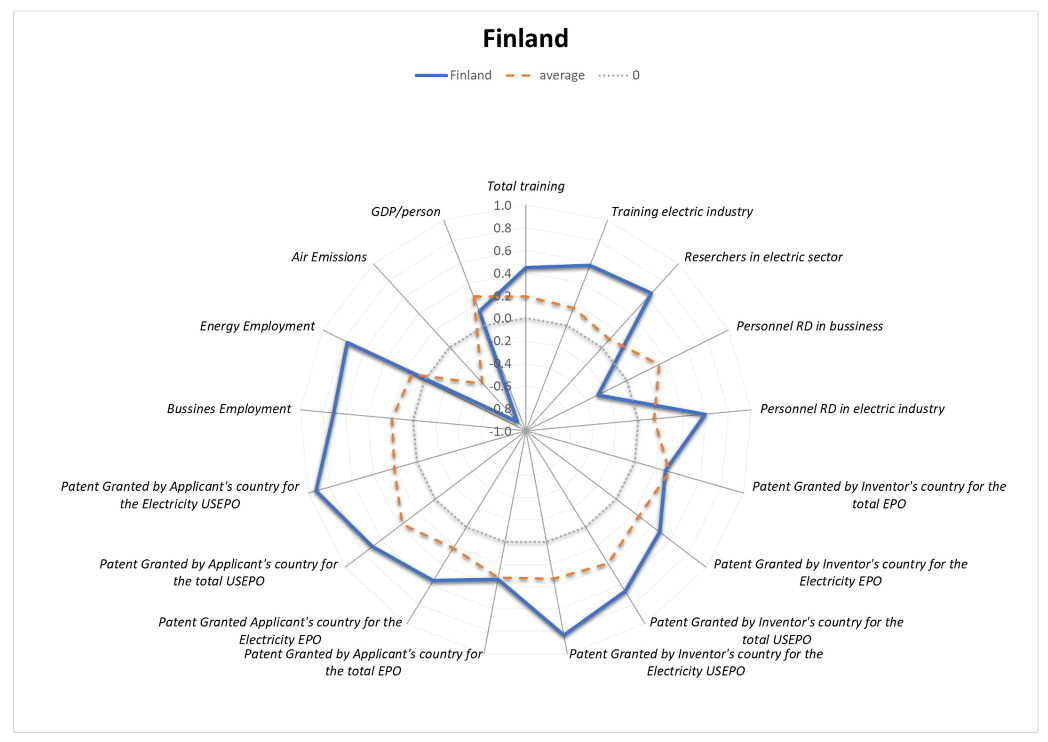
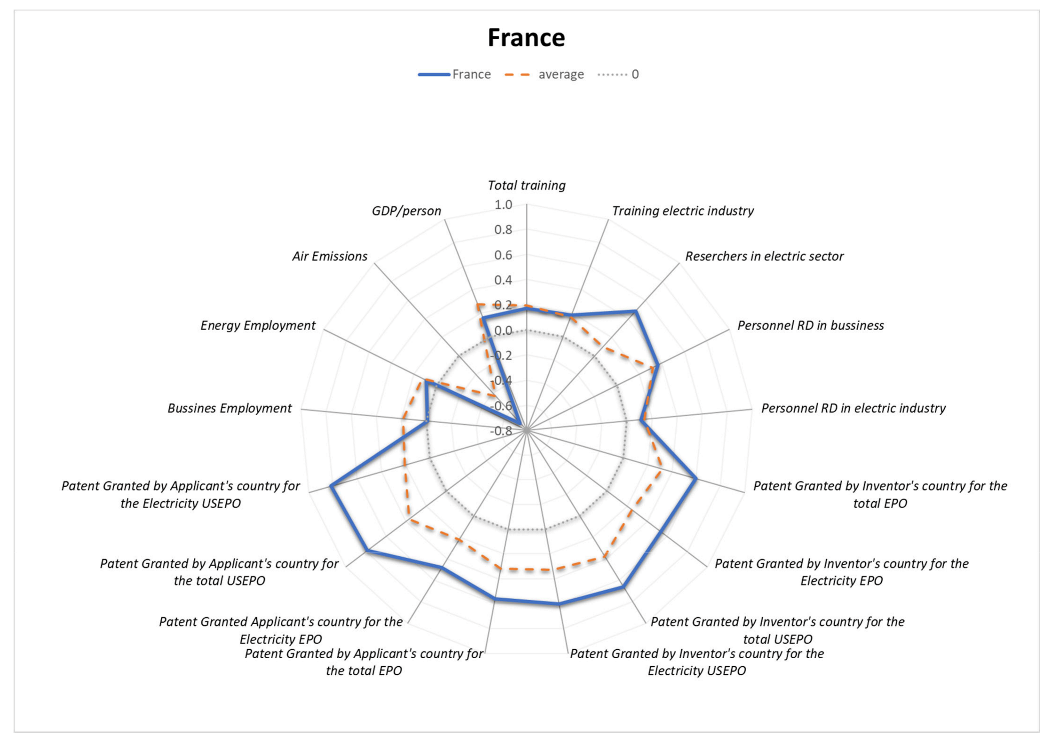
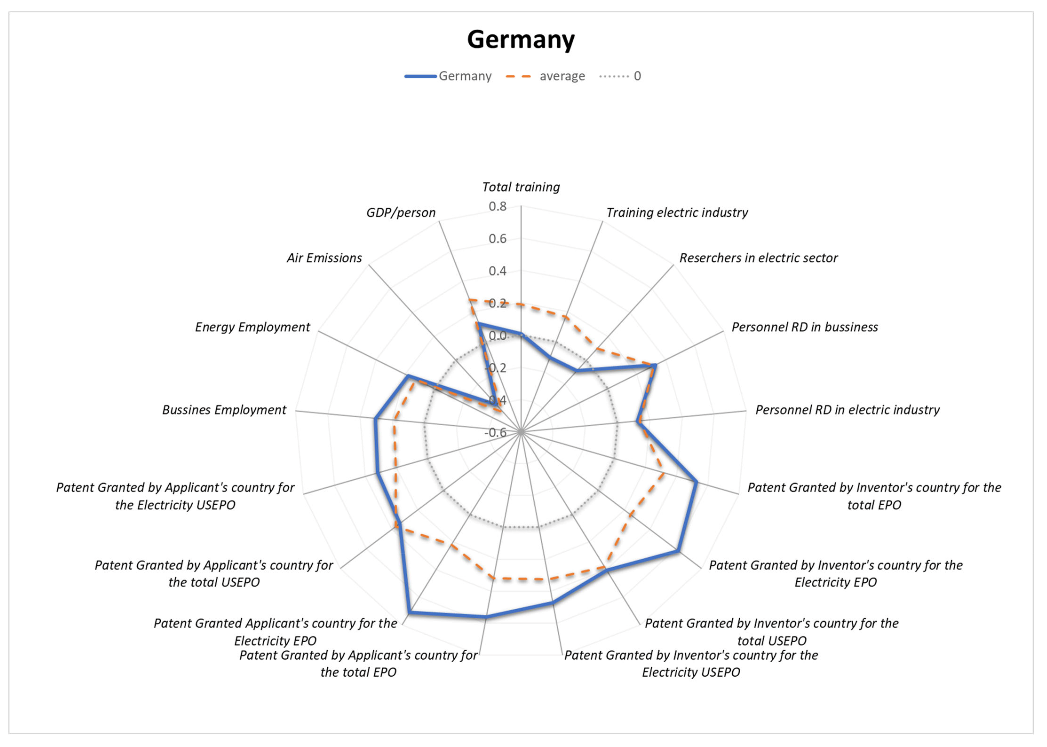
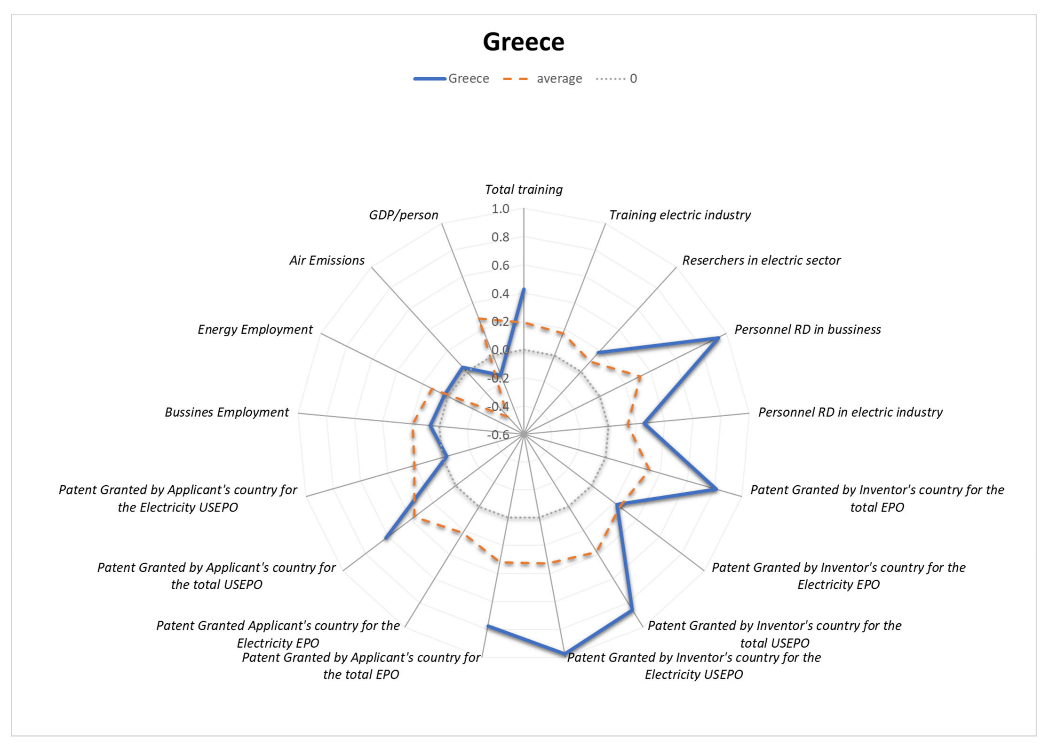

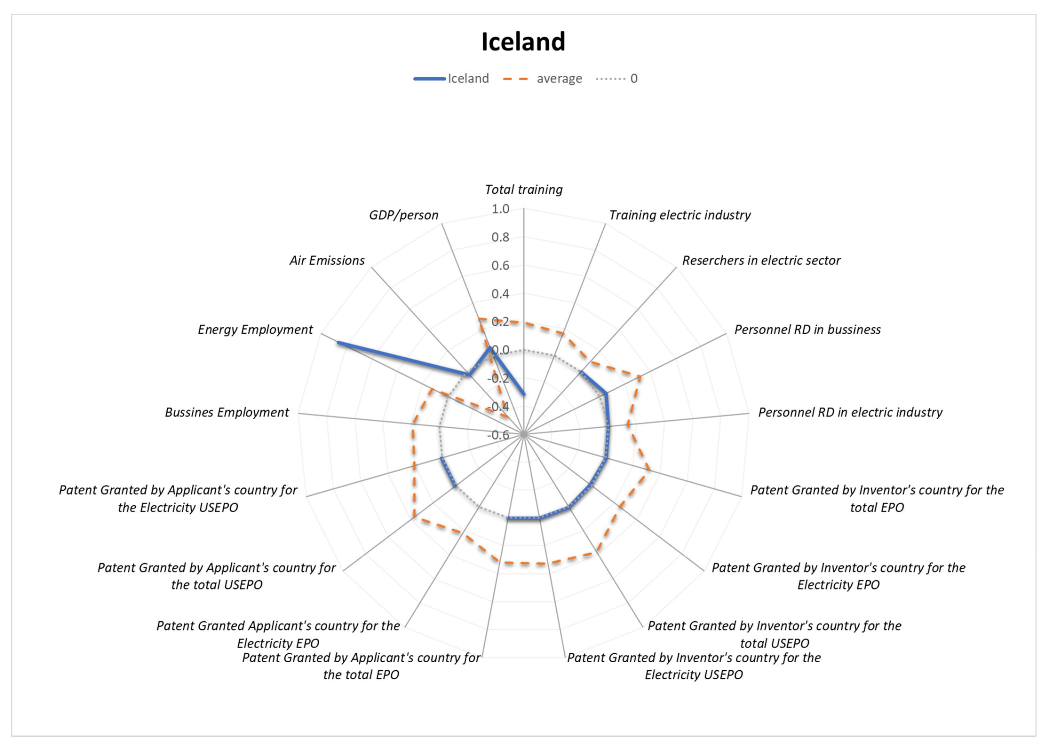




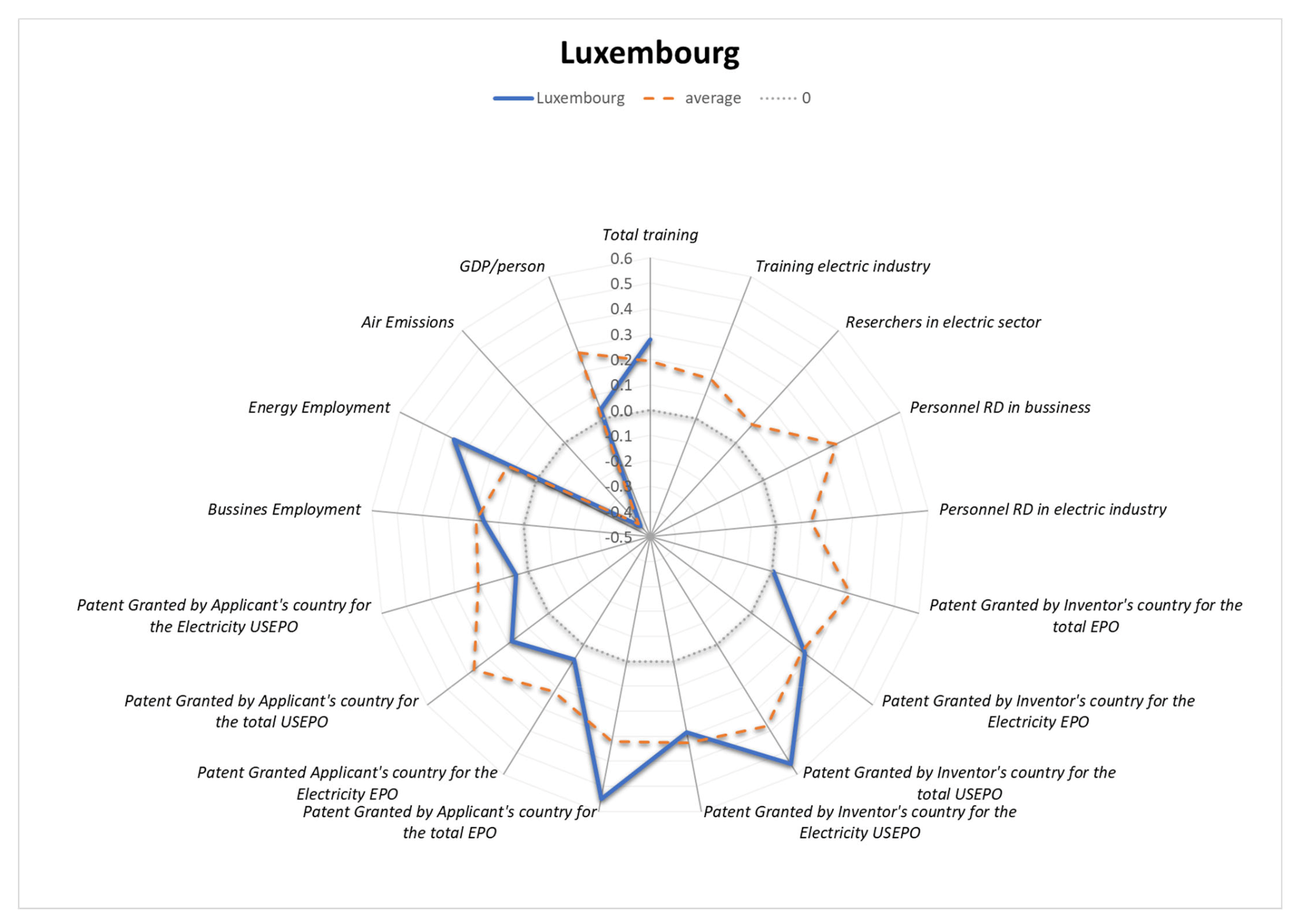

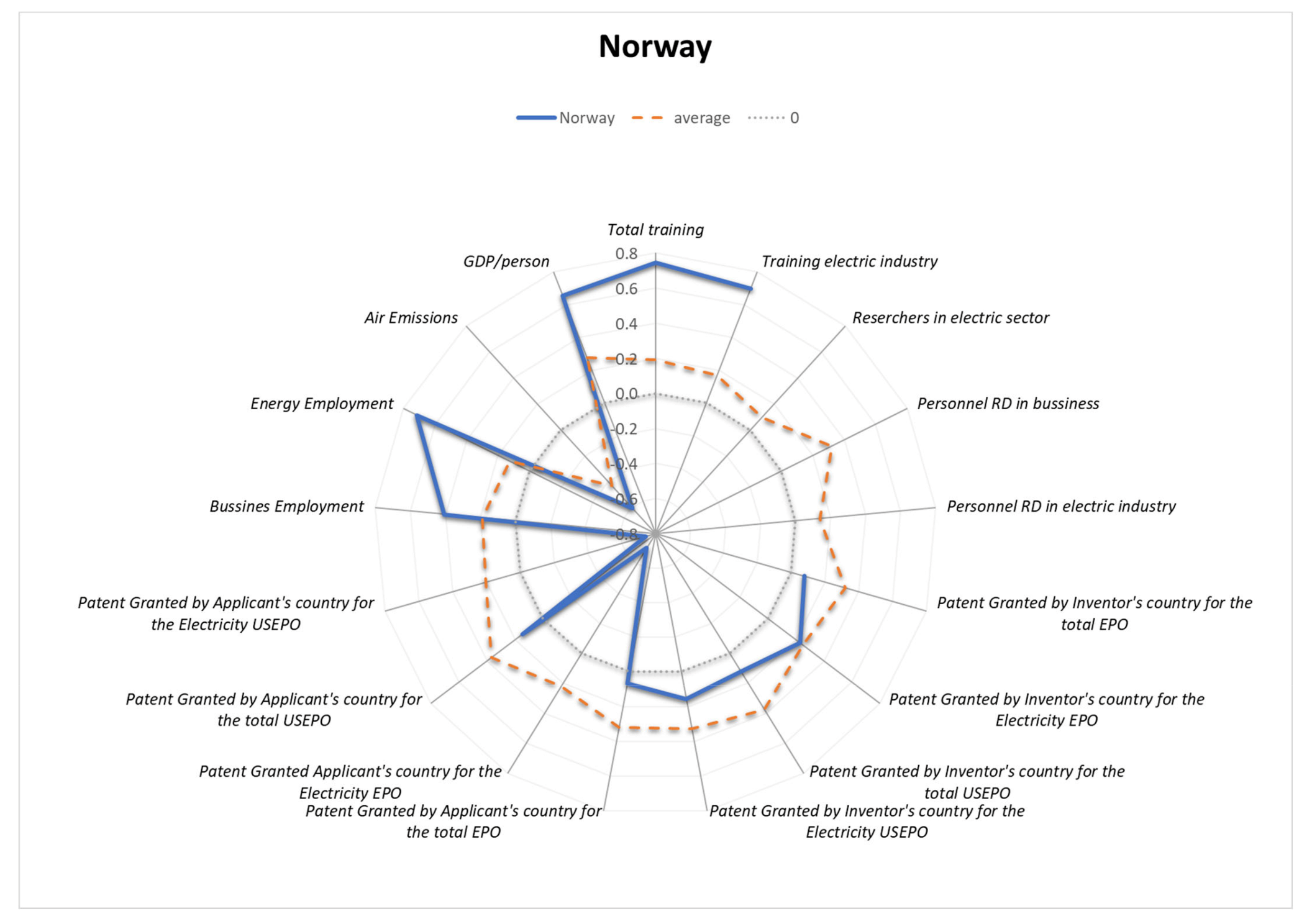
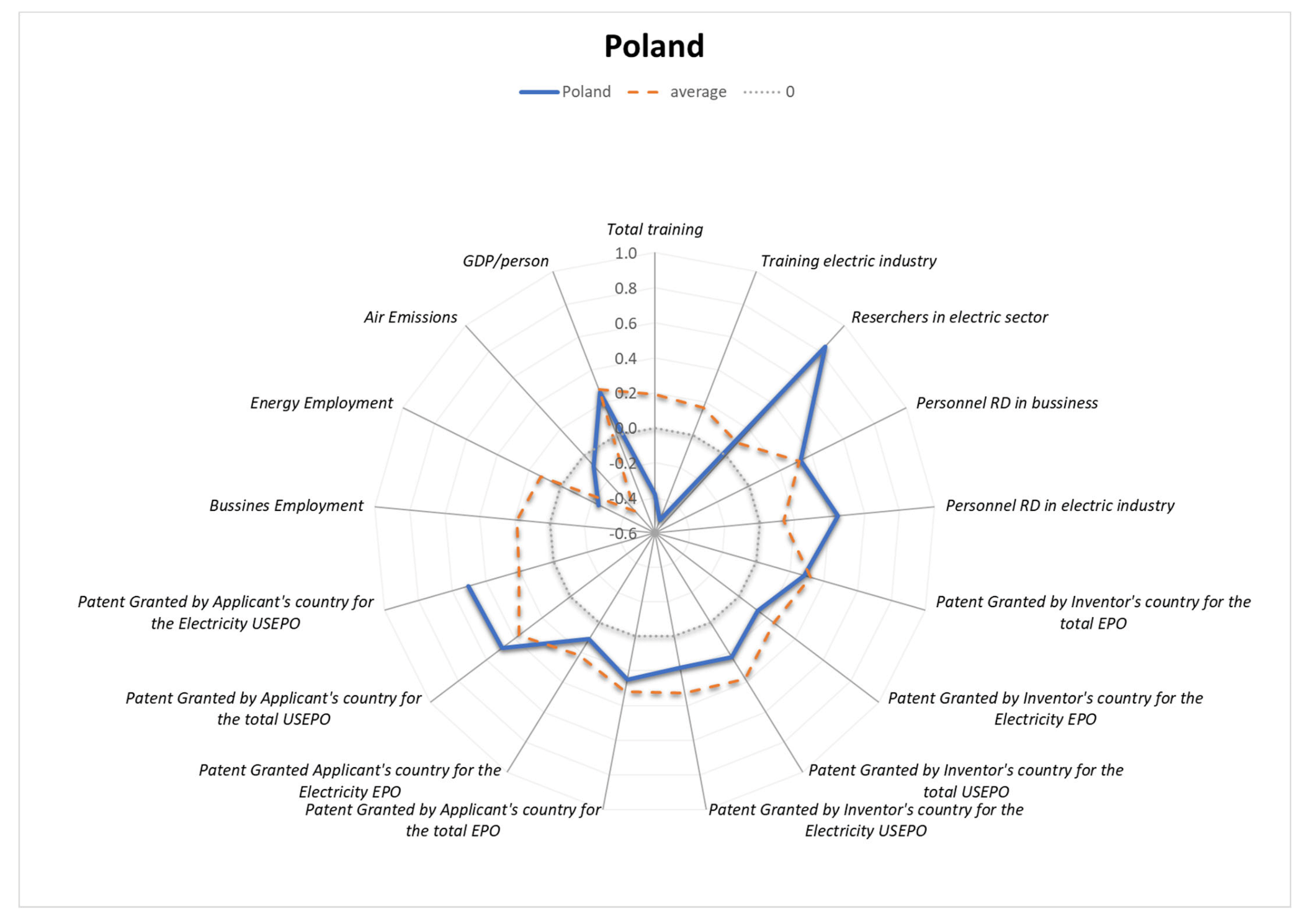
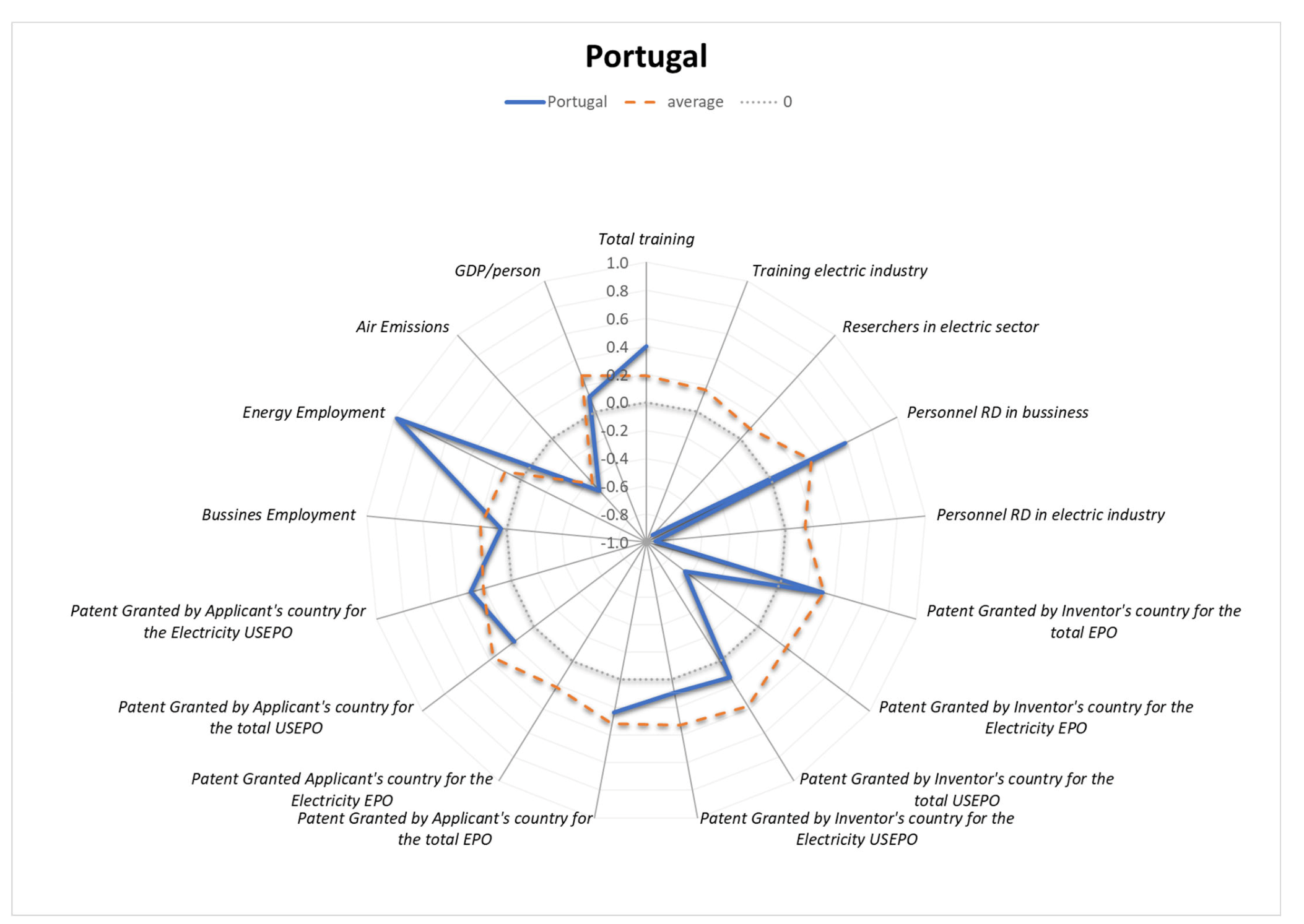
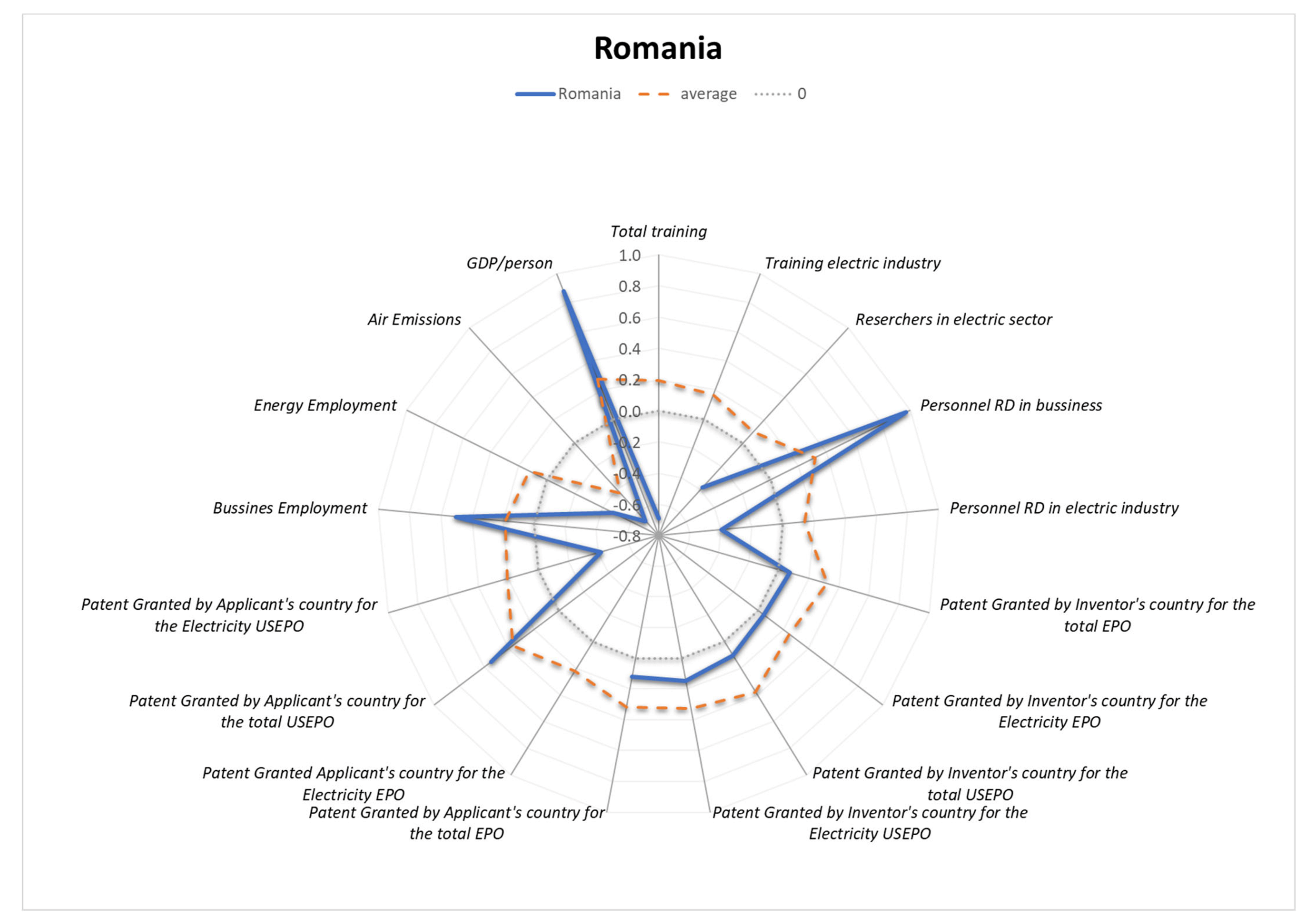

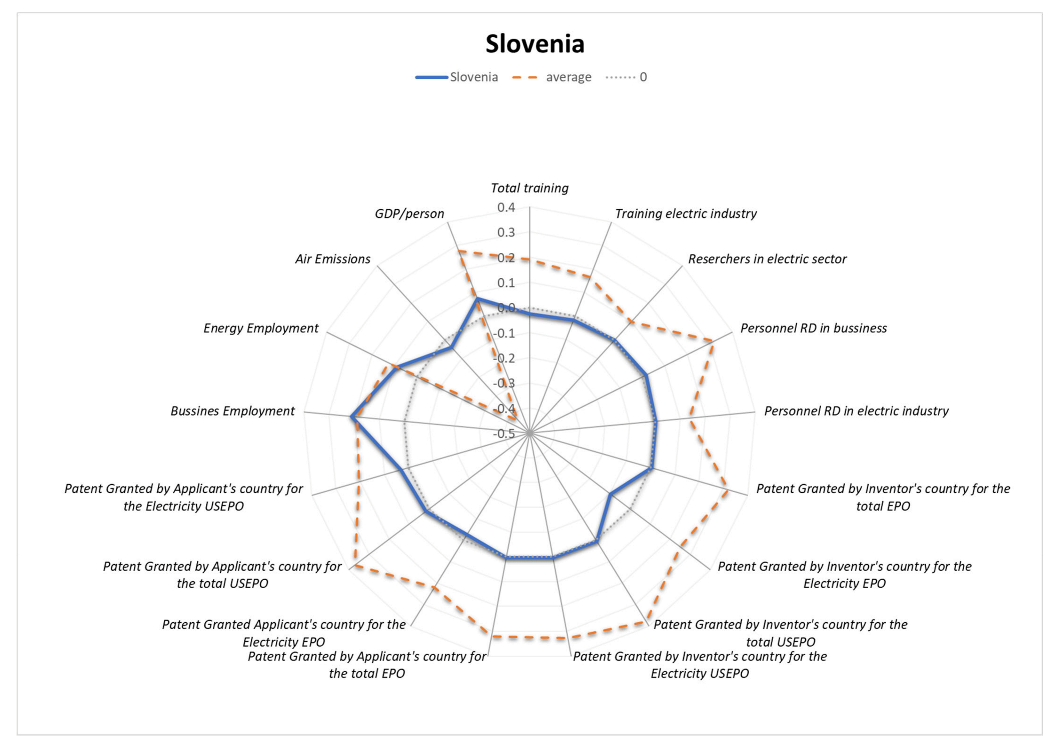

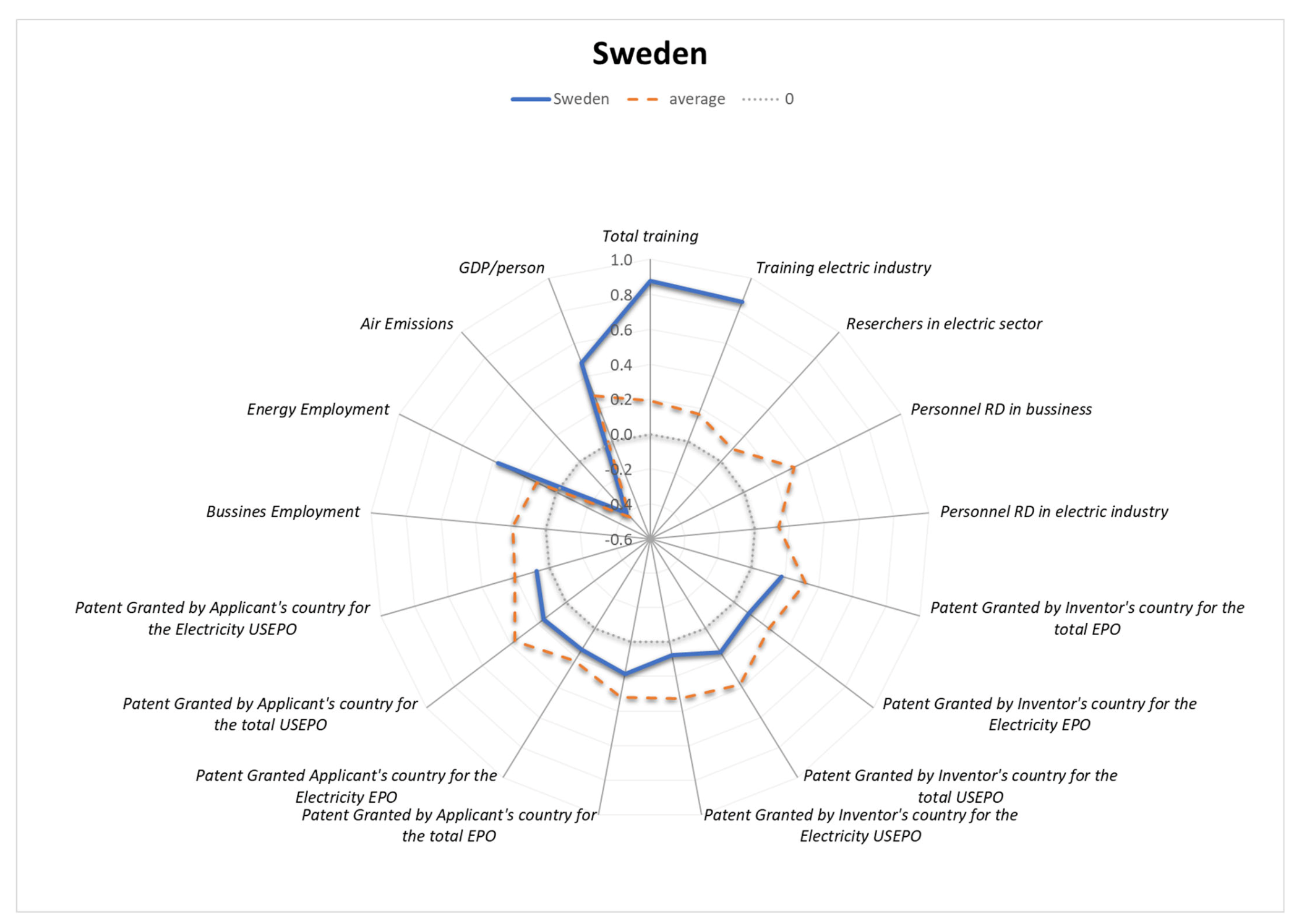

| Explicit Knowledge (Objective) | Tacit Knowledge (Subjective) |
|---|---|
| Knowledge of rationality (mind) | Knowledge of experience (body) |
| Sequential knowledge (there and then) | Simultaneous knowledge (here and now) |
| Digital knowledge (theory) | Analogue knowledge (practice) |
| Variable association and interpretation | |
| Researchers (X1, X2, X3) | Training (X12, X13) |
| Patents (X4, X5, X6, X7, X8, X9, X10, X11) | |
| Variables of impact | (X14, X15, X16, X17) |
| Indicator Category | Indicators That Measure Progress in the Framework of Sustainable Development | Var. | SD Objective Progress | KT Characteristics and Channel | SDG Dimension |
|---|---|---|---|---|---|
| Renewable energy | Share of renewable energy in gross final energy consumption by sector | Y | LT—significant progress ST—moderate progress | Green energy → direct result of KT synergies | SDG7 |
| R&D and innovation—Researchers & BERD personnel (total & energy) | Researchers Internal Personnel (energy) | X1 | LT—significant progress ST—significant progress | Formal KT channel—explicit KT | SDG9 |
| R&D personnel in business | X2 | ||||
| R&D personnel in electric industry | X3 | ||||
| Patent applications and grants to the European Patent Office | Patent granted by inventor’s country for the total EPO | X4 | Formal KT channel—explicit KT | SDG9 | |
| Patent granted by inventor’s country for the electricity EPO | X5 | ||||
| Patent granted by inventor’s country for the total USEPO | X6 | ||||
| Patent granted by inventor’s country for the electricity USEPO | X7 | ||||
| Patent granted by applicant’s country for total EPO | X8 | ||||
| Patent granted by applicant’s country for the electricity EPO | X9 | ||||
| Patent granted by applicant’s country for the total USEPO | X10 | ||||
| Patent granted by applicant’s country for the electricity USEPO | X11 | ||||
| Adult learning/Adult participation in learning | Total training | X12 | LT—significant progress ST—movement away from target | Informal KT channel—tacit KT | SDG4 |
| Share of adults with at least basic digital skills/Training electric industry | X13 | ST—insufficient progress | Formal KT channel—explicit KT | ||
| Employment rate | Employment in enterprises | X14 | LT—moderate progress ST—moderate progress | Economic impact of KT policies measured in terms of jobs | SDG8 |
| Employment in energy sector | X15 | ||||
| Sustainable economic growth | Real GDP per capita | X16 | Economic impact of KT policies measured in terms of income | SDG8 | |
| Sustainable industry | Air emissions intensity of industry | X17 | LT—significant progress ST—significant progress | Environment impact of KT policies measured in terms of greening the economy | SDG9 |
| SDG (in Order of Importance) | SDG Objective | Long-Term and Short-Term Progress |
|---|---|---|
| SDG 9 | SDG 9 calls for building resilient and sustainable infrastructure and promotes inclusive and sustainable industrialization. It also recognizes the importance of research and innovation for finding lasting solutions to social, economic, and environmental challenges. | Showcased significant progress toward the sustainable development objective as well as toward the EU target, both long and short-term. |
| SDG 7 | SDG 7 calls for ensuring universal access to modern energy services, improving energy efficiency and increasing the share of renewable energy. To accelerate the transition to an affordable, reliable, and sustainable energy system that fulfills these demands, countries need to facilitate access to clean energy research and technology and to promote investment in resource- and energy-efficient solutions and low-carbon energy infrastructure. | In the long term, it showcased significant progress toward the sustainable development objective as well as toward the EU target. In the short term, it showcased moderate progress toward the sustainable development objective, as well as toward the EU target. |
| SDG 4 | SDG 4 seeks to ensure access to equitable and quality education through all stages of life as well as to increase the number of young people and adults who have the relevant skills for employment, decent jobs, and entrepreneurship. The goal also envisages the elimination of gender and income disparities in access to education. | In the long term, it showcased significant progress toward the sustainable development objective as well as toward the EU target. In the short term, it showcased movement away from the EU target and moderate progress toward the SD objective. |
| SDG 8 | SDG 8 recognizes the importance of sustained economic growth and high levels of economic productivity for the creation of well-paid quality jobs, as well as resource efficiency in consumption and production. It calls for opportunities for full employment and decent work for all alongside the eradication of forced labor, human trafficking and child labor, and the promotion of labor rights and safe and secure working environments. | Showcased moderate progress towards the EU target, and moderate movement away from SD objective, both long and short-term. |
| Y | X1 | X2 | X3 | X4 | X5 | X6 | X7 | X8 | X9 | X10 | X11 | X12 | X13 | X14 | X15 | X16 | X17 | |
|---|---|---|---|---|---|---|---|---|---|---|---|---|---|---|---|---|---|---|
| AT | 7.9 | 20.1 | 30.5 | 24.4 | 90.5 | 111.2 | 108.3 | 168.8 | 113.0 | 188.1 | 87.2 | 155.8 | 11.9 | 24.4 | 0.3 | 1.3 | 4.6 | −40.0 |
| BE | 138.7 | −25.3 | 53.3 | 162.3 | 79.8 | 116.9 | 57.0 | 57.8 | 89.2 | 148.4 | 39.5 | 6.7 | 11.9 | 45.5 | 6.7 | −4.7 | 5.2 | −30.0 |
| CZ | 81.7 | 71.2 | 50.6 | 135.6 | 162.5 | 166.2 | 256.0 | 321.6 | 198.0 | 283.9 | 54.0 | 70.3 | 23.5 | 40.9 | −6.6 | 9.1 | 16.4 | −60.0 |
| DK | 83.1 | −56.1 | −61.8 | 90.8 | 126.7 | 83.1 | 90.5 | 107.2 | 133.0 | 85.7 | 80.8 | −15.2 | −18.9 | 3.5 | 0.9 | 8.9 | −66.7 | |
| EE | 65.5 | 101.8 | 6.7 | 214.1 | 277.2 | 454.0 | 185.1 | 410.1 | 171.4 | 230.0 | 63.9 | 0.2 | 31.8 | 17.6 | −11.2 | 29.9 | −37.0 | |
| FI | 27.3 | 42.1 | −7.9 | 46.1 | 97.0 | 56.8 | 41.0 | 22.8 | 81.3 | 49.2 | 39.2 | 25.3 | 12.2 | 15.6 | 19.3 | 20.8 | 3.7 | −30.8 |
| FR | 34.6 | 16.8 | 12.7 | 3.8 | 57.5 | 64.8 | 52.4 | 57.4 | 61.5 | 71.6 | 44.0 | 42.2 | 202.6 | 189.4 | −0.2 | 3.1 | 5.5 | −25.0 |
| DE | 89.7 | −7.8 | 29.5 | 11.1 | 47.5 | 55.4 | 36.5 | 42.3 | 50.5 | 63.6 | 30.3 | 28.8 | 0.8 | −9.6 | 27.4 | 16.1 | 10.9 | −33.3 |
| EL | 98.8 | 547.5 | 105.6 | 390.2 | 121.5 | 439.6 | 115.1 | 96.4 | 127.1 | 61.0 | −3.6 | 42.2 | 6.4 | 2.4 | −15.1 | 4.2 | ||
| HU | 5.9 | −38.5 | 64.8 | −38.0 | 47.1 | 157.3 | 93.2 | 180.0 | −0.8 | 25.8 | 23.5 | 56.6 | 139.4 | 14.9 | −3.8 | 20.6 | 0.0 | |
| IS | 1.0 | 7900.0 | 20.7 | 11900.0 | 254.8 | −100.0 | 135.9 | 424.4 | 290.9 | 177.7 | 208.8 | −3.3 | 1.2 | 17.2 | −33.3 | |||
| IE | 92.4 | −41.6 | 60.3 | −44.9 | 122.3 | 171.9 | 120.3 | 160.1 | 187.7 | 480.1 | 146.8 | 141.3 | 19.8 | 13.3 | 1.4 | 46.9 | −60.0 | |
| IT | 69.7 | 204.1 | 71.1 | 166.4 | 39.8 | 24.7 | 49.5 | 80.3 | 36.4 | −0.4 | 19.5 | 18.5 | 34.8 | 26.0 | −1.9 | 2.0 | −0.8 | −40.0 |
| LV | 29.3 | −7.7 | −28.9 | 700.0 | 79.5 | 62.1 | 78.7 | 57.0 | 22.0 | 12.8 | 0.9 | 36.4 | −5.6 | |||||
| LT | 146.7 | −33.3 | 82.8 | 0.0 | 953.3 | 22.7 | 108.8 | 367.8 | 1333.3 | 78.3 | 101.4 | 303.9 | 29.6 | 1.0 | −25.1 | 41.0 | −55.6 | |
| LU | 112.8 | −3.0 | 0.5 | 427.6 | 62.4 | 395.6 | 204.9 | 1610.9 | 612.3 | 2286.4 | 31.2 | 17.8 | 40.9 | 4.3 | −50.0 | |||
| NL | 43.8 | 54.9 | 60.8 | 37.8 | 92.2 | 65.4 | 65.7 | 82.4 | 80.7 | 66.7 | 92.7 | 121.2 | 8.9 | 3.3 | 7.3 | 13.7 | 5.9 | −37.5 |
| NO | 6.7 | 33.4 | 84.2 | 29.3 | 55.3 | 43.2 | 97.2 | −9.5 | 45.9 | −9.0 | 9.0 | 9.6 | 16.5 | 9.4 | 4.4 | −11.1 | ||
| PL | 96.9 | 115.4 | 296.0 | 216.1 | 342.2 | 707.2 | 414.4 | 533.6 | 388.3 | 864.3 | 199.3 | 192.1 | −36.6 | −50.5 | −23.6 | 25.4 | −8.1 | |
| PT | 33.4 | −36.0 | 56.9 | −35.7 | 108.3 | −51.4 | 246.3 | 359.7 | 141.8 | 190.1 | 112.0 | 83.9 | 1.3 | 33.8 | 3.9 | −16.8 | ||
| RO | 38.1 | −100.0 | 39.3 | −96.6 | 505.0 | 867.7 | 364.5 | 257.2 | 311.1 | 70.4 | −15.9 | −26.3 | 19.1 | −18.1 | 33.5 | −25.8 | ||
| SK | 20.1 | 75.0 | 77.6 | 82.6 | 61.3 | 478.8 | 58.3 | −34.5 | −43.4 | −14.4 | 10.0 | 9.2 | −13.9 | 19.2 | −42.9 | |||
| SI | 0.7 | 1030.0 | 41.1 | 178.0 | 164.2 | −7.2 | 114.3 | 140.9 | 174.3 | −27.6 | 47.0 | 23.0 | −27.6 | −39.9 | 3.4 | 7.9 | 9.5 | −17.6 |
| ES | 21.9 | 67.5 | 3.7 | 58.8 | 108.0 | 311.7 | 104.6 | 169.1 | 106.5 | 363.1 | 58.8 | 84.2 | −9.8 | −6.0 | 3.2 | 13.8 | 6.0 | −25.0 |
| SE | 18.2 | 15.3 | 101.1 | 170.3 | 112.2 | 237.2 | 98.6 | 126.9 | 111.7 | 241.6 | 20.8 | 15.5 | 6.7 | 8.7 | −45.5 | |||
| CH | 58.1 | 75.5 | 74.7 | 94.1 | 64.1 | 152.2 | 100.0 | 120.4 | 2.5 | −2.9 | 5.2 | −50.0 | ||||||
| TR | 107.9 | 134.3 | 77.0 | 268.5 | 373.4 | 544.3 | 619.4 | 233.1 | 385.4 | 513.6 | 382.8 | 68.0 | 31.9 | 44.8 | 71.4 | 42.3 | ||
| UK | 285.0 | 24.4 | 49.3 | 162.7 | 72.7 | 92.0 | 54.2 | 85.7 | 70.9 | 68.9 | 28.7 | 37.3 | −23.6 | −28.2 | 16.6 | 21.9 | 8.7 | 0.0 |
| YX1 | YX2 | YX3 | YX4 | YX5 | YX6 | YX7 | YX8 | YX9 | YX10 | YX11 | YX12 | YX13 | YX14 | YX15 | YX16 | YX17 | |
|---|---|---|---|---|---|---|---|---|---|---|---|---|---|---|---|---|---|
| AT | 0.4 | 0.3 | 0.3 | 0.1 | 0.1 | 0.1 | 0.0 | 0.1 | 0.0 | 0.1 | 0.1 | 0.7 | 0.3 | 0.0 | 0.2 | 0.6 | −0.2 |
| BE | −0.2 | 0.4 | 0.9 | 0.6 | 0.8 | 0.4 | 0.4 | 0.6 | 0.9 | 0.3 | 0.0 | 0.1 | 0.3 | 0.0 | 0.0 | 0.0 | −0.2 |
| CZ | 0.9 | 0.6 | 0.6 | 0.5 | 0.5 | 0.3 | 0.3 | 0.4 | 0.3 | 0.7 | 0.9 | 0.3 | 0.5 | −0.1 | 0.1 | 0.2 | −0.7 |
| DK | −0.7 | −0.7 | 0.9 | 0.7 | 1.0 | 0.9 | 0.8 | 0.6 | 1.0 | 1.0 | −0.2 | −0.2 | 0.0 | 0.0 | 0.1 | −0.8 | |
| EE | 0.6 | 0.1 | 0.3 | 0.2 | 0.1 | 0.4 | 0.2 | 0.4 | 0.3 | 1.0 | 0.0 | 0.5 | 0.3 | −0.2 | 0.5 | −0.6 | |
| FI | 0.6 | −0.3 | 0.6 | 0.3 | 0.5 | 0.7 | 0.8 | 0.3 | 0.6 | 0.7 | 0.9 | 0.4 | 0.6 | 0.7 | 0.8 | 0.1 | −0.9 |
| FR | 0.5 | 0.4 | 0.1 | 0.6 | 0.5 | 0.7 | 0.6 | 0.6 | 0.5 | 0.8 | 0.8 | 0.2 | 0.2 | 0.0 | 0.1 | 0.2 | −0.7 |
| DE | −0.1 | 0.3 | 0.1 | 0.5 | 0.6 | 0.4 | 0.5 | 0.6 | 0.7 | 0.3 | 0.3 | 0.0 | −0.1 | 0.3 | 0.2 | 0.1 | −0.4 |
| EL | 0.2 | 0.9 | 0.3 | 0.8 | 0.2 | 0.9 | 1.0 | 0.8 | 0.6 | 0.0 | 0.4 | 0.1 | 0.0 | −0.2 | 0.0 | ||
| HU | −0.2 | 0.1 | −0.2 | 0.1 | 0.0 | 0.1 | 0.0 | −0.1 | 0.2 | 0.3 | 0.1 | 0.0 | 0.4 | −0.6 | 0.3 | 0.0 | |
| IS | 0.0 | 0.1 | 0.0 | 0.0 | 0.0 | 0.0 | 0.0 | 0.0 | 0.0 | 0.0 | −0.3 | 0.9 | 0.1 | 0.0 | |||
| IE | −0.4 | 0.7 | −0.5 | 0.8 | 0.5 | 0.8 | 0.6 | 0.5 | 0.2 | 0.6 | 0.7 | 0.2 | 0.1 | 0.0 | 0.5 | −0.6 | |
| IT | 0.3 | 1.0 | 0.4 | 0.6 | 0.4 | 0.7 | 0.9 | 0.5 | 0.0 | 0.3 | 0.3 | 0.5 | 0.4 | 0.0 | 0.0 | 0.0 | −0.6 |
| LV | −0.3 | −1.0 | 0.0 | 0.4 | 0.5 | 0.4 | 0.5 | 0.8 | 0.4 | 0.0 | 0.8 | −0.2 | |||||
| LT | −0.2 | 0.6 | 0.0 | 0.2 | 0.2 | 0.7 | 0.4 | 0.1 | 0.5 | 0.7 | 0.5 | 0.2 | 0.0 | −0.2 | 0.3 | −0.4 | |
| LU | 0.0 | 0.0 | 0.3 | 0.6 | 0.3 | 0.6 | 0.1 | 0.2 | 0.0 | 0.3 | 0.2 | 0.4 | 0.0 | −0.4 | |||
| NL | 0.8 | 0.7 | 0.9 | 0.5 | 0.7 | 0.7 | 0.5 | 0.5 | 0.7 | 0.5 | 0.4 | 0.2 | 0.1 | 0.2 | 0.3 | 0.1 | −0.9 |
| NO | 0.2 | 0.1 | 0.2 | 0.1 | 0.2 | 0.1 | −0.7 | 0.1 | −0.7 | 0.7 | 0.7 | 0.4 | 0.7 | 0.7 | −0.6 | ||
| PL | 0.8 | 0.3 | 0.4 | 0.3 | 0.1 | 0.2 | 0.2 | 0.2 | 0.1 | 0.5 | 0.5 | −0.4 | −0.5 | −0.2 | 0.3 | −0.1 | |
| PT | −0.9 | 0.6 | −0.9 | 0.3 | −0.7 | 0.1 | 0.1 | 0.2 | 0.2 | 0.3 | 0.4 | 0.0 | 1.0 | 0.1 | −0.5 | ||
| RO | −0.4 | 1.0 | −0.4 | 0.1 | 0.0 | 0.1 | 0.1 | 0.1 | 0.5 | −0.4 | −0.7 | 0.5 | −0.5 | 0.9 | −0.7 | ||
| SK | 0.3 | 0.3 | 0.2 | 0.3 | 0.0 | 0.3 | −0.6 | −0.5 | −0.7 | 0.5 | 0.5 | −0.7 | 1.0 | −0.5 | |||
| SI | 0.0 | 0.0 | 0.0 | 0.0 | −0.1 | 0.0 | 0.0 | 0.0 | 0.0 | 0.0 | 0.0 | 0.0 | 0.0 | 0.2 | 0.1 | 0.1 | 0.0 |
| ES | 0.3 | 0.2 | 0.4 | 0.2 | 0.1 | 0.2 | 0.1 | 0.2 | 0.1 | 0.4 | 0.3 | −0.5 | −0.3 | 0.1 | 0.6 | 0.3 | −0.9 |
| SE | 0.8 | 0.2 | 0.1 | 0.2 | 0.1 | 0.2 | 0.1 | 0.2 | 0.1 | 0.9 | 0.9 | 0.4 | 0.5 | −0.4 | |||
| CH | |||||||||||||||||
| TR | 0.0 | 0.0 | 0.0 | 0.0 | 0.0 | 0.0 | 0.0 | 0.0 | 0.0 | 0.0 | 0.0 | 0.0 | 0.0 | 0.0 | 0.0 | 0.0 | |
| UK | 0.1 | 0.2 | 0.6 | 0.3 | 0.3 | 0.2 | 0.3 | 0.2 | 0.2 | 0.1 | 0.1 | −0.1 | −0.1 | 0.1 | 0.1 | 0.0 | 0.0 |
| Variables | Synergy/Trade-Off | Interpretation |
|---|---|---|
| Share of renewable energy in the final consumption and Patent granted by Applicant’s country for the total USEPO | Synergy | Relatively important at 0.4 |
| Share of renewable energy in the final consumption and Patent granted by Inventor’s country for the total USEPO | Synergy | Relatively important at 0.4 |
| Share of renewable energy in the final consumption and GDP/person | Synergy | Low importance at 0.3 |
| Share of renewable energy in the final consumption and R&D personnel in business | Synergy | Low importance at 0.3 |
| Share of renewable energy in the final consumption and Training electric industry | Synergy | Very low importance at 0.2 |
| Share of renewable energy in the final consumption and Total training | Synergy | Very low importance at 0.2 |
| Share of renewable energy in the final consumption and Air emission | Trade-off | Relatively important at 0.4 (this showcases the efficiency of the KT policy in the renewable energy sector at European level as an impact factor on the environment) |
| Share of renewable energy in the final consumption and Researchers in the electric sector/Energy Employment/R&D personnel in electric industry | Trade-off | Very low importance at 0.1/0 |
| Local Innovator | Implementer | Global Innovator | Integrated Player | ||
|---|---|---|---|---|---|
| With desirable trade-off with air emissions | Without jobs and income synergies | Denmark, France | Czech Republic | ||
| With job synergies | Spain | Portugal | Netherlands | ||
| With income synergies | Finland | ||||
| With jobs and income synergies | Estonia, Romania | Sweden | Norway | ||
| Without desirable trade-off with air emissions | Without jobs and income synergies | Poland | Lithuania | Italy, Latvia, UK | |
| With job synergies | Germany, Hungary, Luxembourg | ||||
| With income synergies | |||||
| With jobs and income synergies | Austria | Belgium |
Publisher’s Note: MDPI stays neutral with regard to jurisdictional claims in published maps and institutional affiliations. |
© 2021 by the authors. Licensee MDPI, Basel, Switzerland. This article is an open access article distributed under the terms and conditions of the Creative Commons Attribution (CC BY) license (https://creativecommons.org/licenses/by/4.0/).
Share and Cite
Grigorescu, A.; Ion, A.-E.; Lincaru, C.; Pirciog, S. Synergy Analysis of Knowledge Transfer for the Energy Sector within the Framework of Sustainable Development of the European Countries. Energies 2022, 15, 276. https://doi.org/10.3390/en15010276
Grigorescu A, Ion A-E, Lincaru C, Pirciog S. Synergy Analysis of Knowledge Transfer for the Energy Sector within the Framework of Sustainable Development of the European Countries. Energies. 2022; 15(1):276. https://doi.org/10.3390/en15010276
Chicago/Turabian StyleGrigorescu, Adriana, Amalia-Elena Ion, Cristina Lincaru, and Speranta Pirciog. 2022. "Synergy Analysis of Knowledge Transfer for the Energy Sector within the Framework of Sustainable Development of the European Countries" Energies 15, no. 1: 276. https://doi.org/10.3390/en15010276
APA StyleGrigorescu, A., Ion, A.-E., Lincaru, C., & Pirciog, S. (2022). Synergy Analysis of Knowledge Transfer for the Energy Sector within the Framework of Sustainable Development of the European Countries. Energies, 15(1), 276. https://doi.org/10.3390/en15010276







